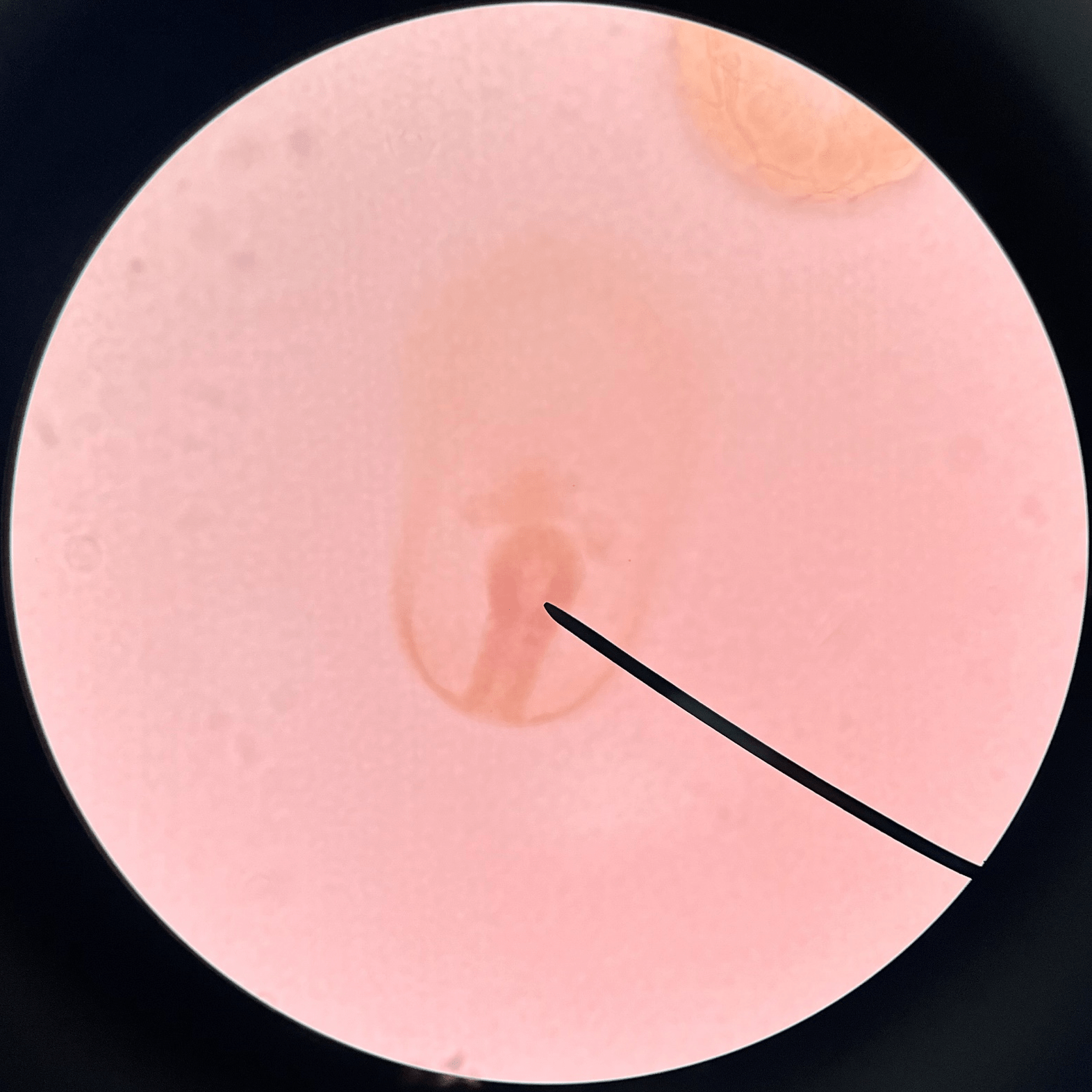BSC2086L E.15 Embryology and Development
0.0(0)
Card Sorting
1/30
Study Analytics
Name | Mastery | Learn | Test | Matching | Spaced |
|---|
No study sessions yet.
31 Terms
1
New cards
one-cell stage
• The stage of the conceptus before cleavage occurs.
• The conceptus is a zygote.
• The conceptus is a zygote.
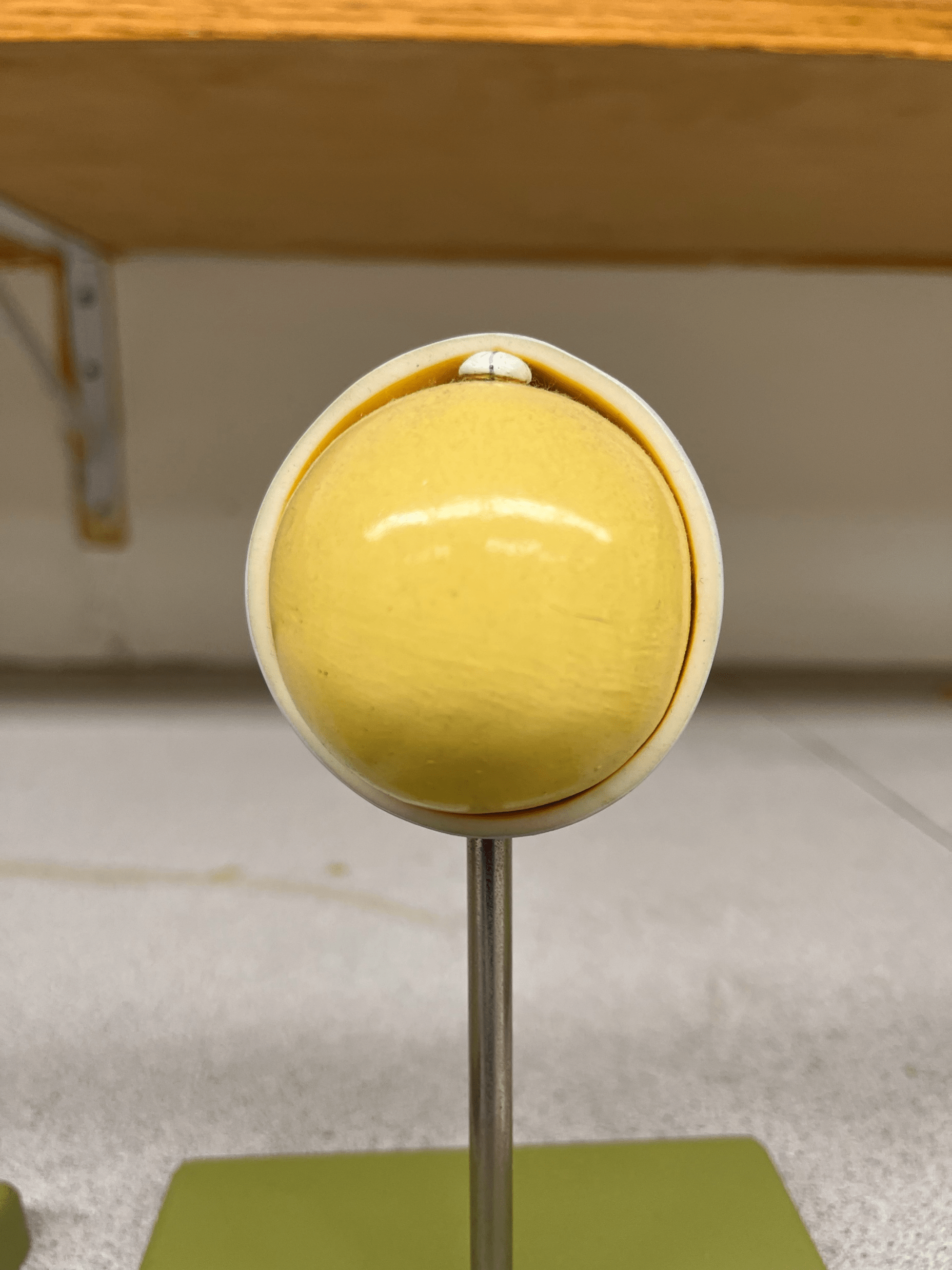
2
New cards
two-cell stage
• The stage of the conceptus after one mitotic cleavage.
• The conceptus is composed of two cells.
• The conceptus is composed of two cells.

3
New cards
four-cell stage
• The stage of the conceptus after two mitotic cleavages.
• The conceptus is composed of four cells.
• The conceptus is composed of four cells.
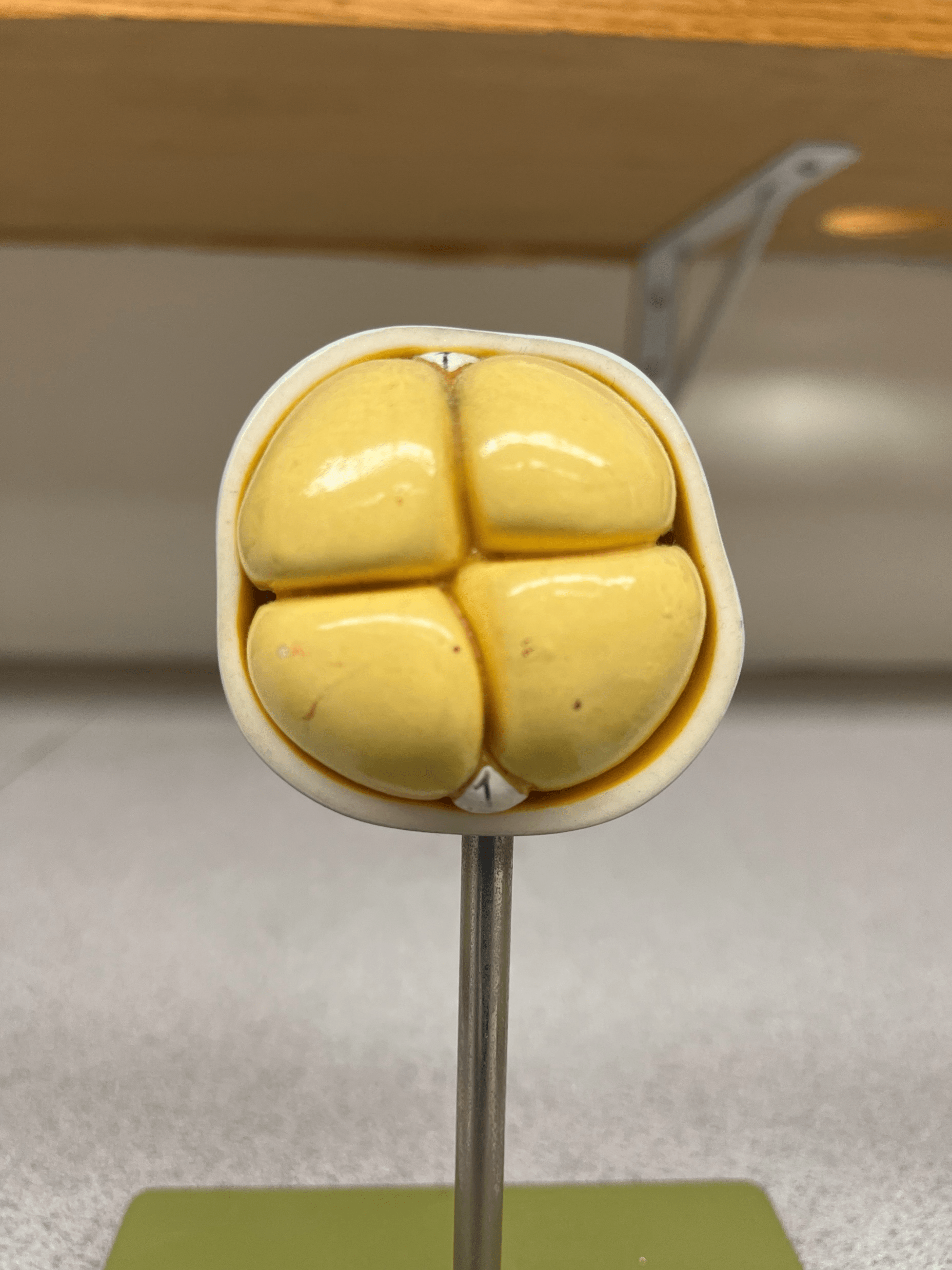
4
New cards
morula
• The stage of the conceptus after several mitotic cleavages.
• The conceptus is composed of 16-64 cells.
• The conceptus is composed of 16-64 cells.
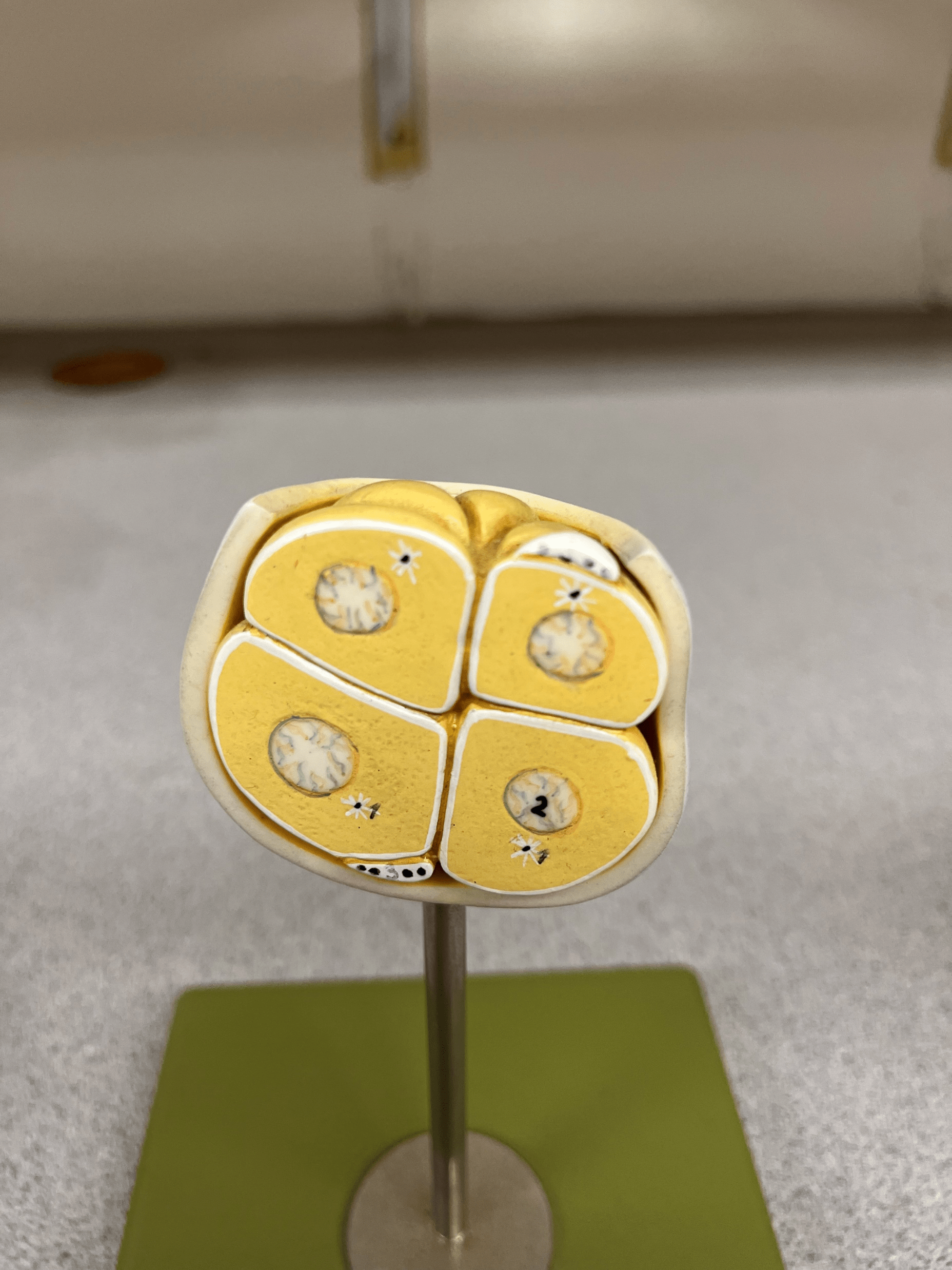
5
New cards
implantation
• The contact of the trophoblast of the blastocyst with the endometrium of the uterus.
• The trophoblast differentiates to form the chorion.
• The inner cell mass differentiates into the embryonic disc.
• The trophoblast differentiates to form the chorion.
• The inner cell mass differentiates into the embryonic disc.
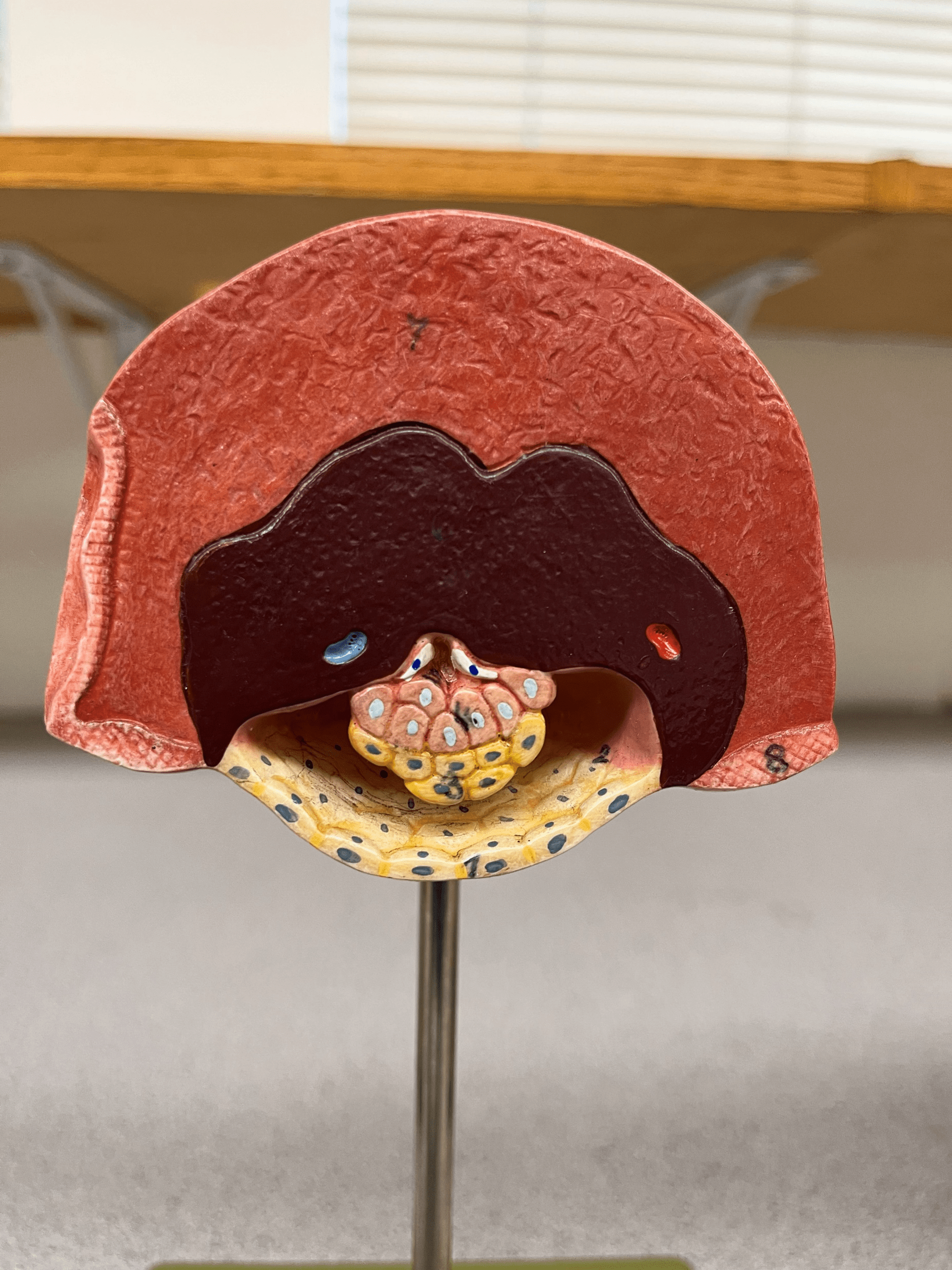
6
New cards
ectoderm
• Model of the 15-day embryo.
• A germ layer.
• Faces the amniotic cavity.
• A germ layer.
• Faces the amniotic cavity.

7
New cards
endoderm
• Model of the 15-day embryo.
• A germ layer.
• Faces the yolk sac.
• A germ layer.
• Faces the yolk sac.
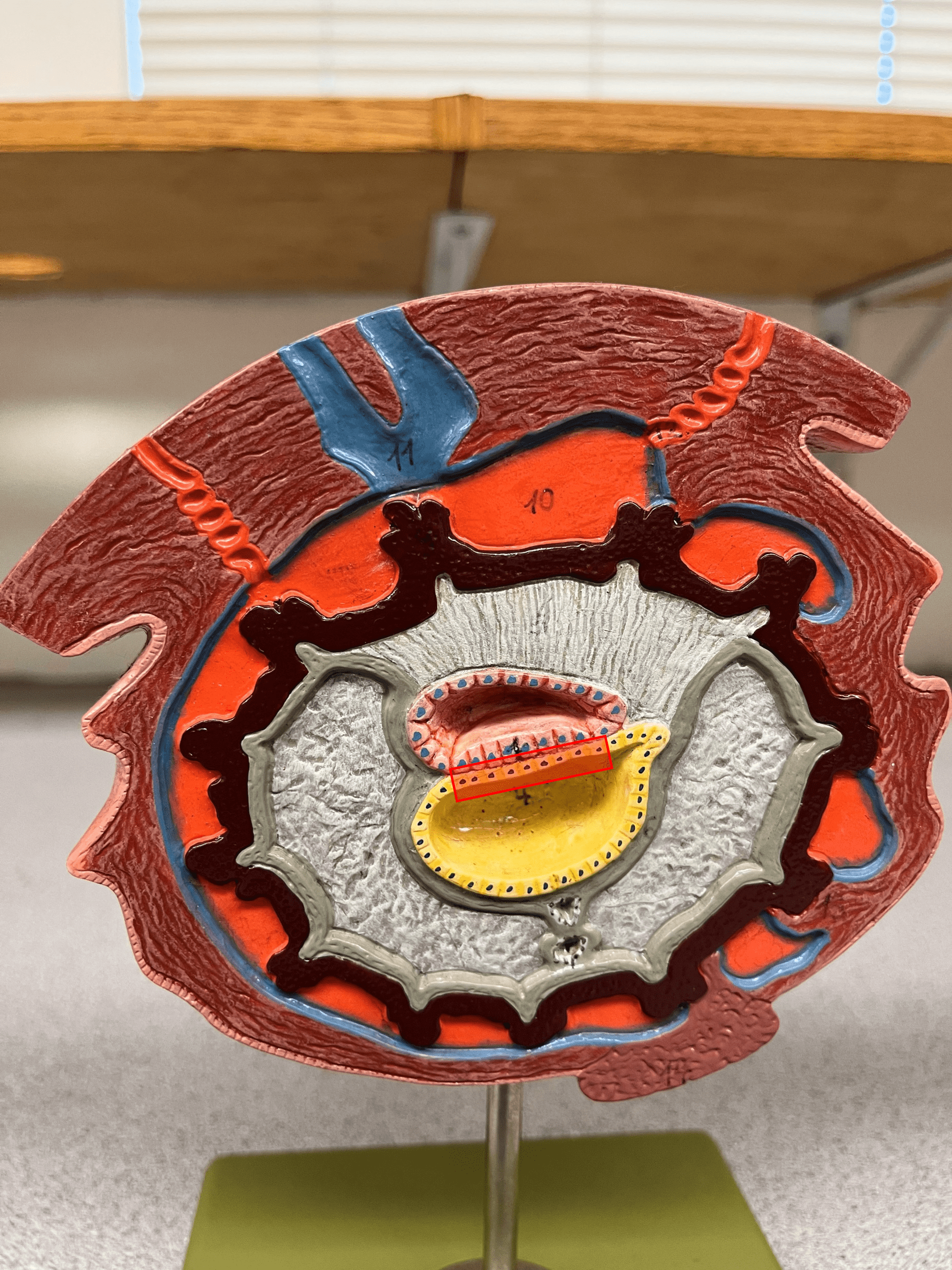
8
New cards
amnion
• Model of the 15-day embryo.
• An embryonic membrane.
• Forms the inner sac around the embryo and is filled with amniotic fluid.
• An embryonic membrane.
• Forms the inner sac around the embryo and is filled with amniotic fluid.
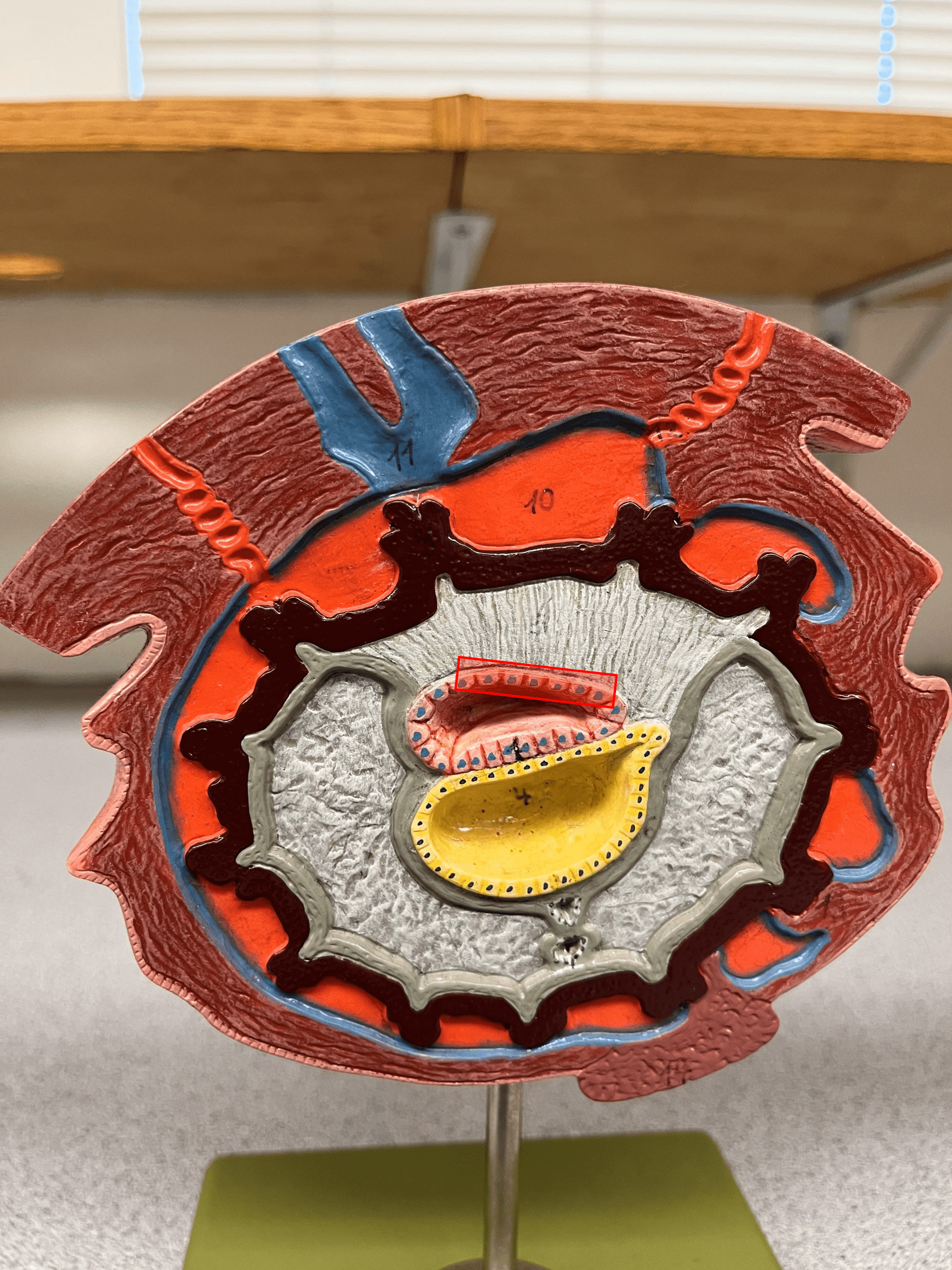
9
New cards
amniotic cavity
• Model of the 15-day embryo.
• The space within the amnion where the embryo is located.
• Filled with amniotic fluid.
• The space within the amnion where the embryo is located.
• Filled with amniotic fluid.
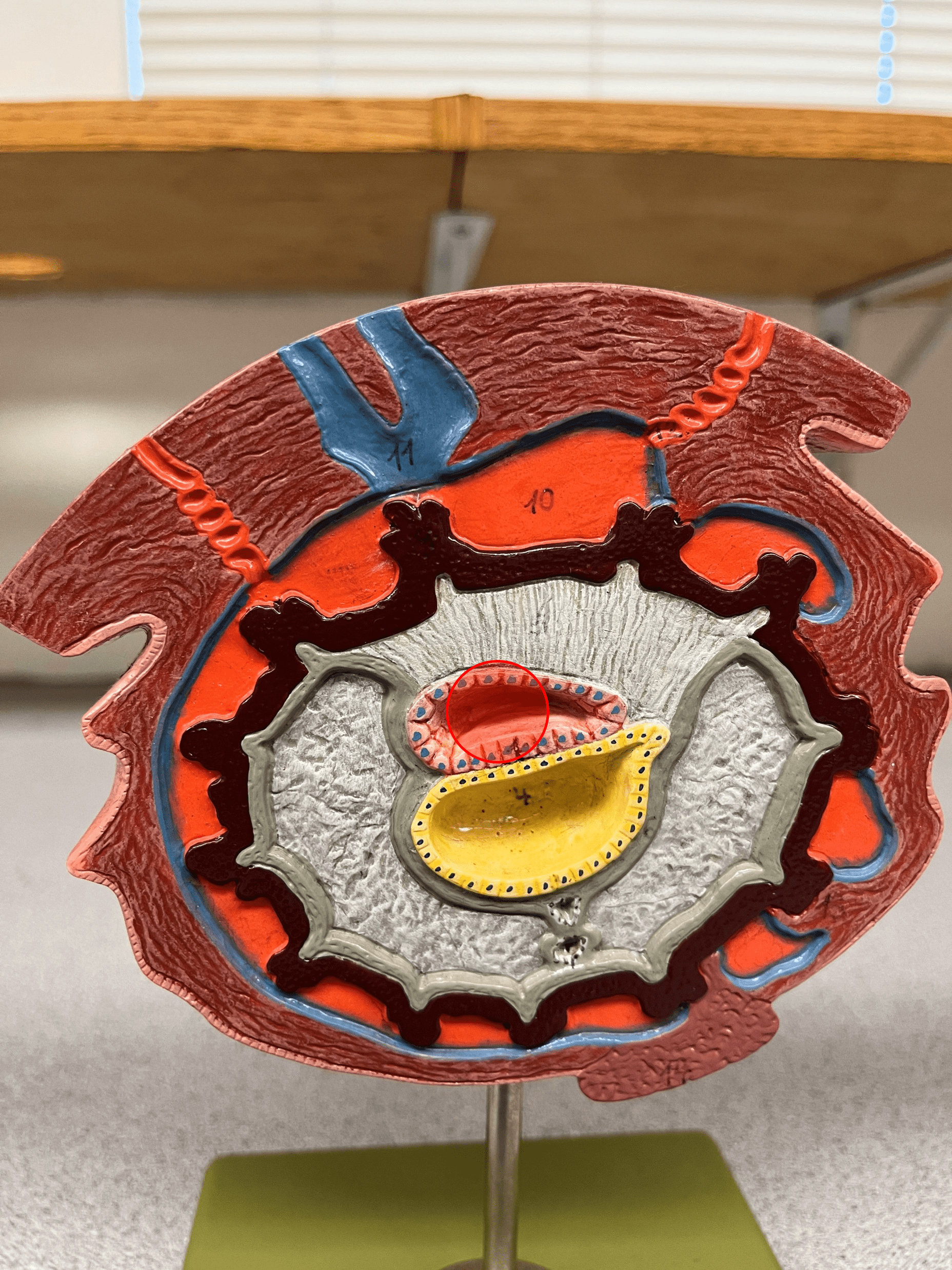
10
New cards
yolk sac
• Model of the 15-day embryo.
• An embryonic membrane.
• Site of early blood formation.
• An embryonic membrane.
• Site of early blood formation.
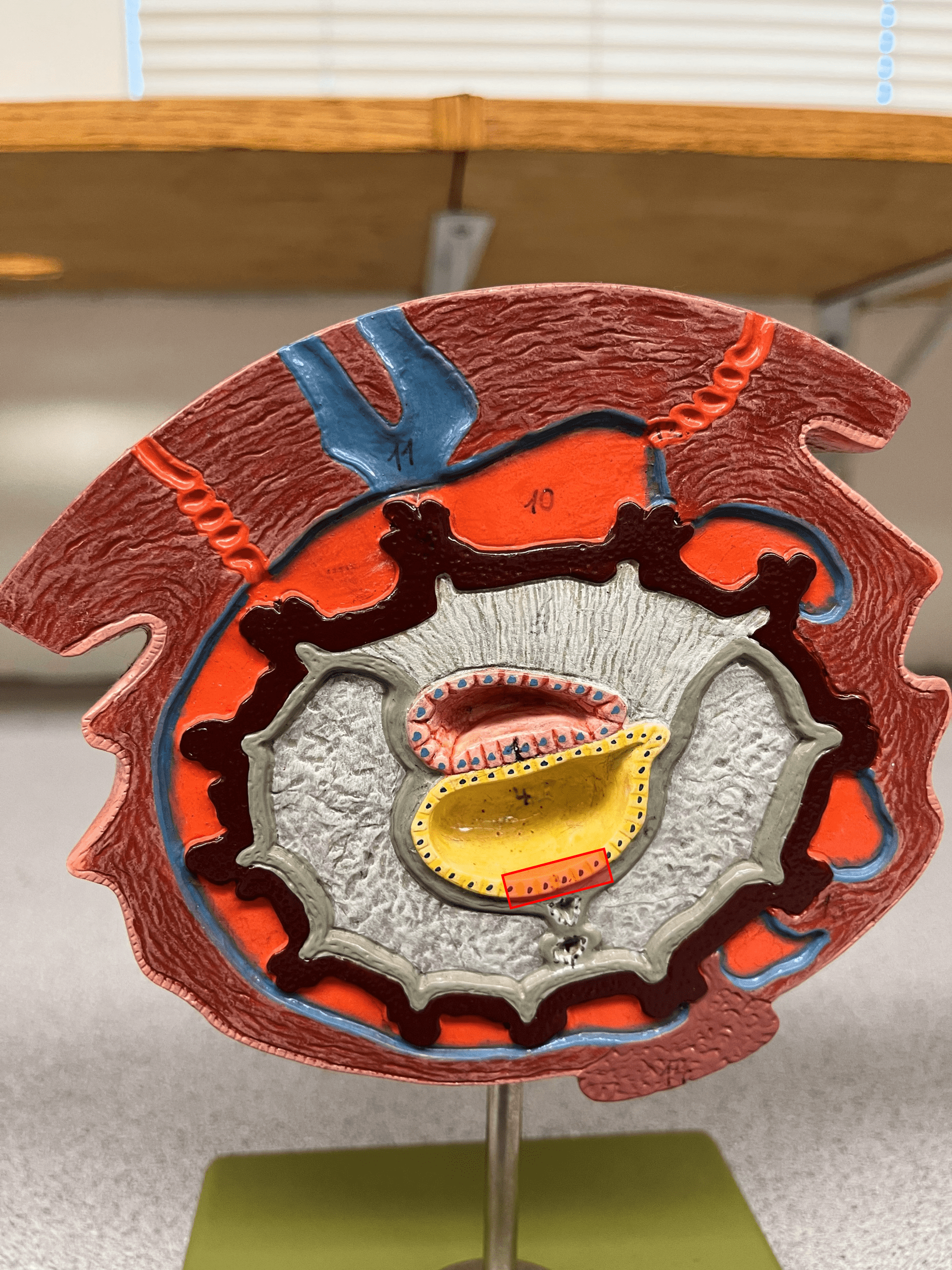
11
New cards
allantois
• Model of the 15-day embryo.
• An embryonic membrane.
• A small projection of the yolk sac.
• Forms part of the umbilical cord and part of the urinary bladder.
• An embryonic membrane.
• A small projection of the yolk sac.
• Forms part of the umbilical cord and part of the urinary bladder.
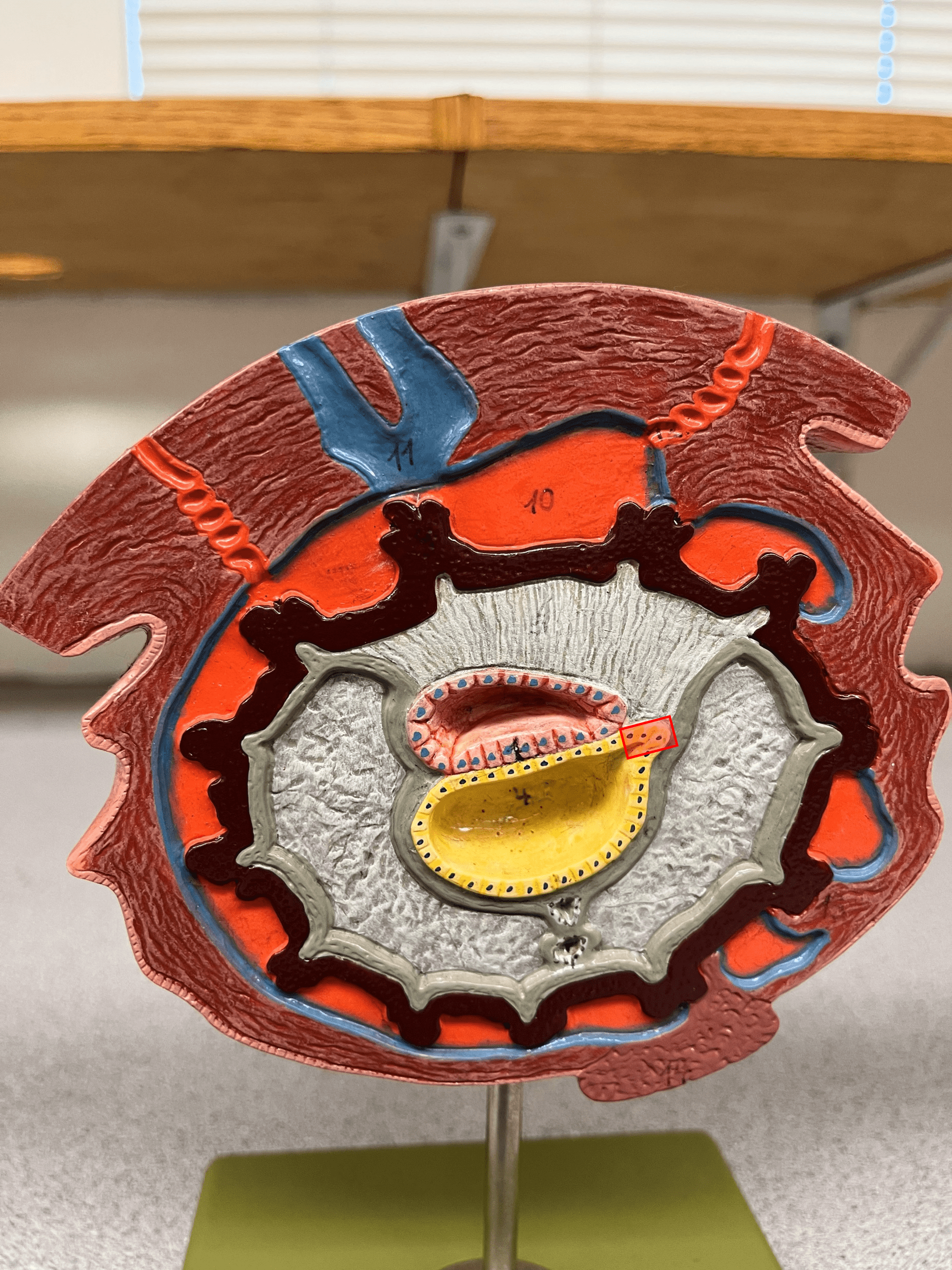
12
New cards
chorion
• Model of the 15-day embryo.
• An embryonic membrane.
• Forms the outermost membrane around the fetus and embryonic portion of the placenta.
• An embryonic membrane.
• Forms the outermost membrane around the fetus and embryonic portion of the placenta.
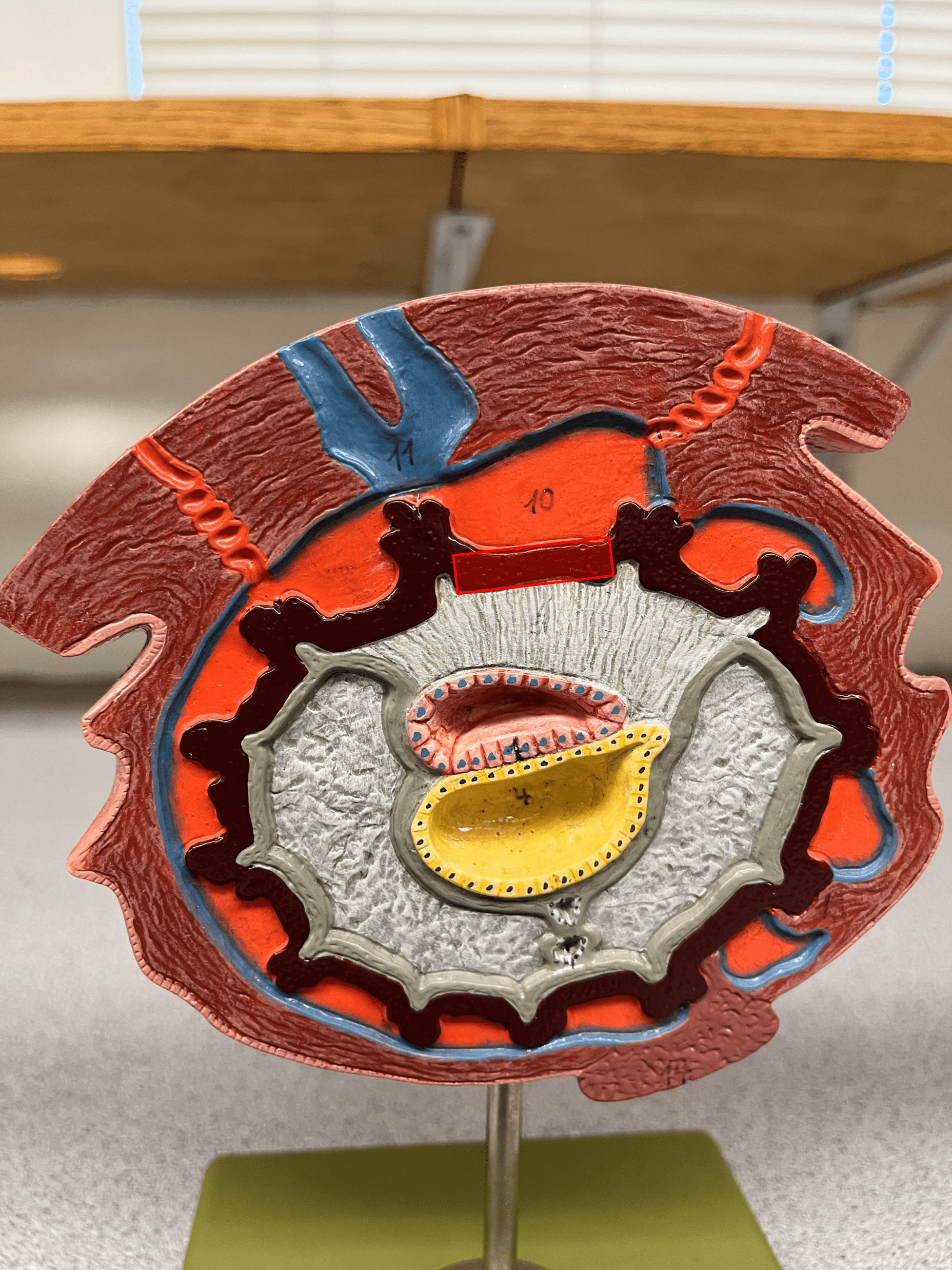
13
New cards
chorionic villi
• Model of the 30-day embryo.
• Extensions of the chorion that bring fetal and maternal blood into close proximity to allow diffusion of nutrients and wastes.
• Contains vessels.
• Extensions of the chorion that bring fetal and maternal blood into close proximity to allow diffusion of nutrients and wastes.
• Contains vessels.
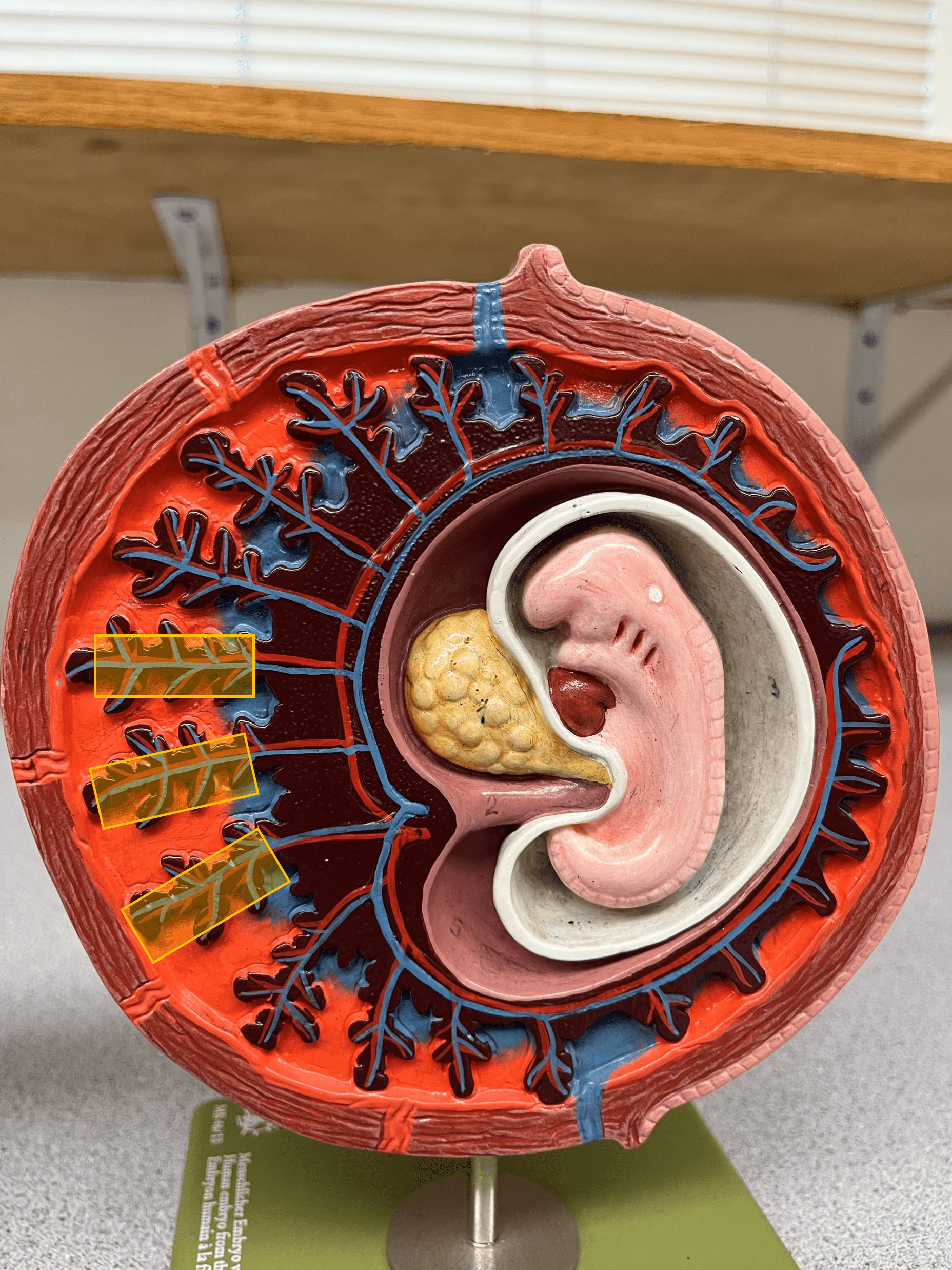
14
New cards
intervillous space
• Model of the 30-day embryo.
• The maternal portion of the placenta that exchanges nutrients and wastes with chorionic villi vessels.
• Also known as a placental sinus.
• The maternal portion of the placenta that exchanges nutrients and wastes with chorionic villi vessels.
• Also known as a placental sinus.
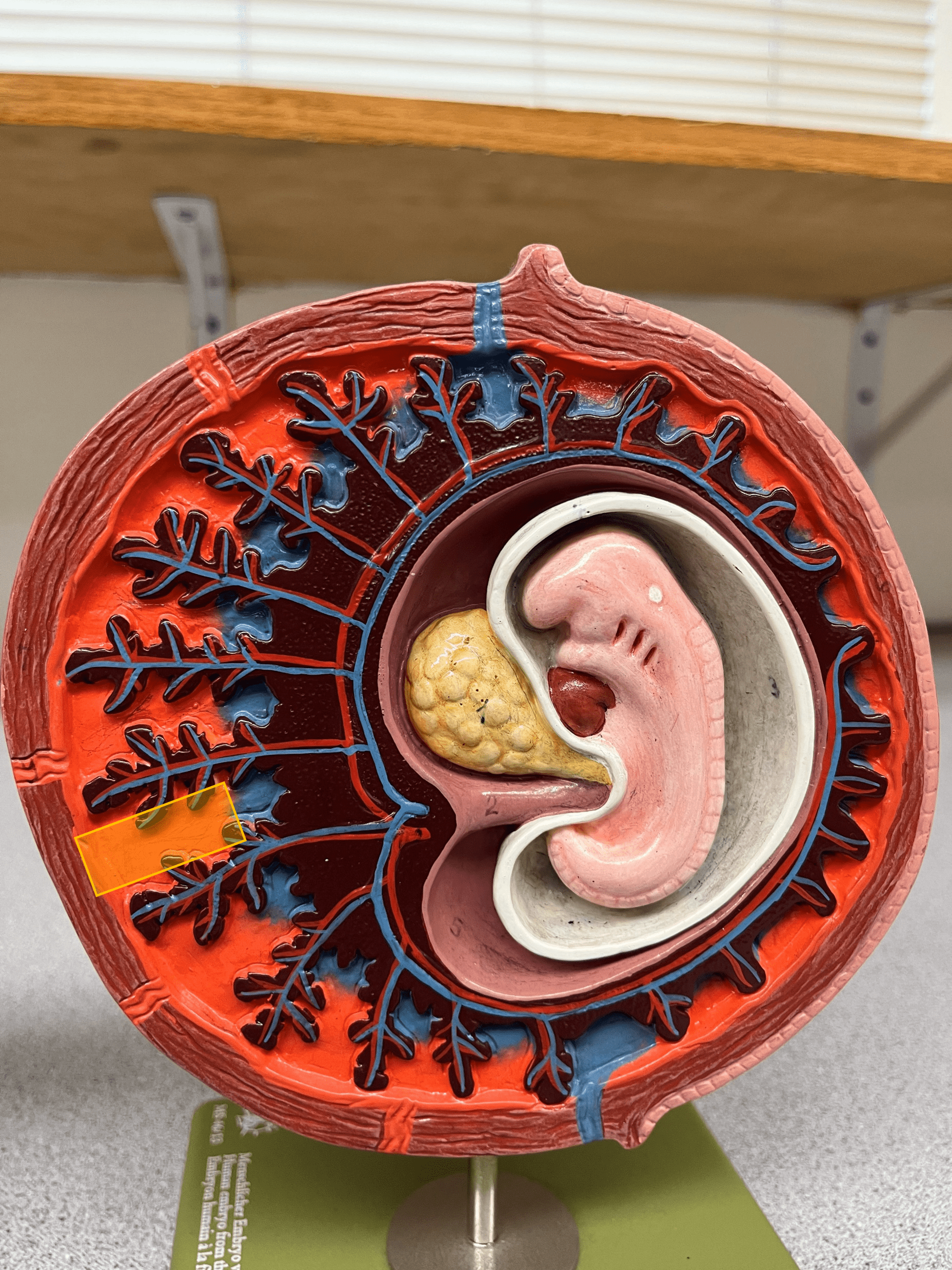
15
New cards
prone position
• Model of the developing fetus in the uterus.
• The position in which the fetus faces downwards.
• The position in which the fetus faces downwards.
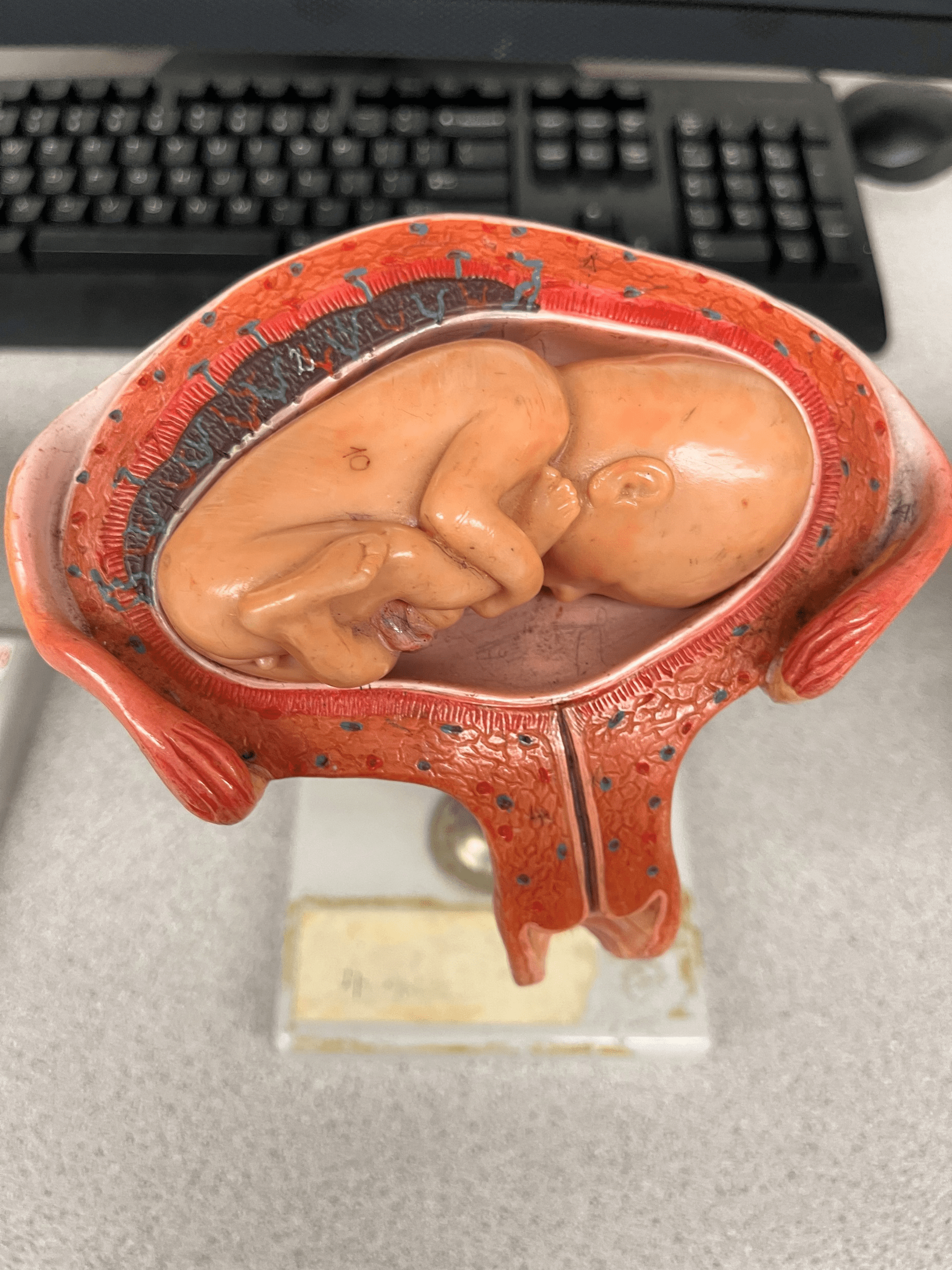
16
New cards
breech position
• Model of the developing fetus in the uterus.
• The position in which the feet face downwards.
• The position in which the feet face downwards.
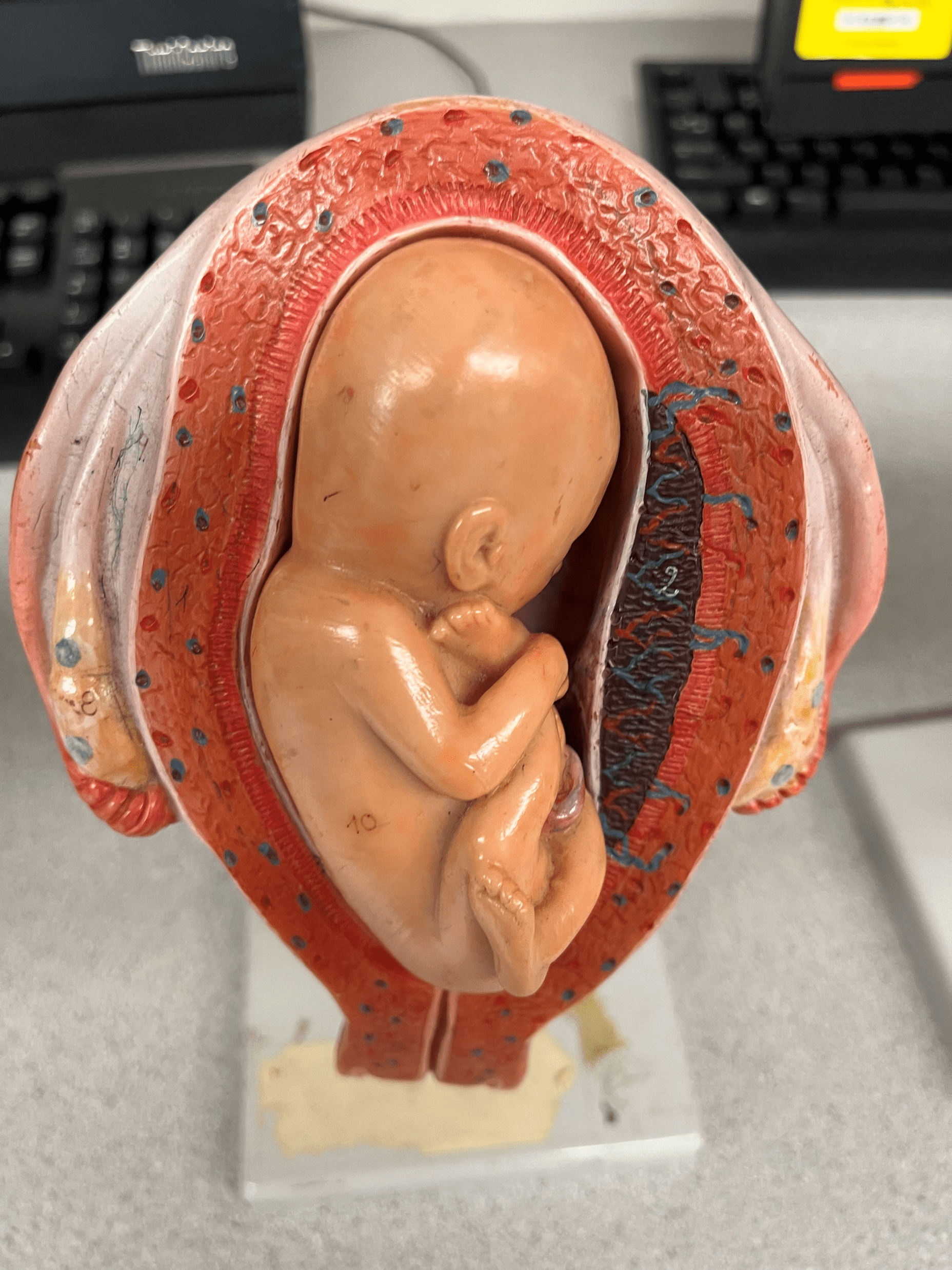
17
New cards
dorsal position
• Model of the developing fetus in the uterus.
• The position in which the fetus faces upwards.
• Also known as the supine position.
• The position in which the fetus faces upwards.
• Also known as the supine position.
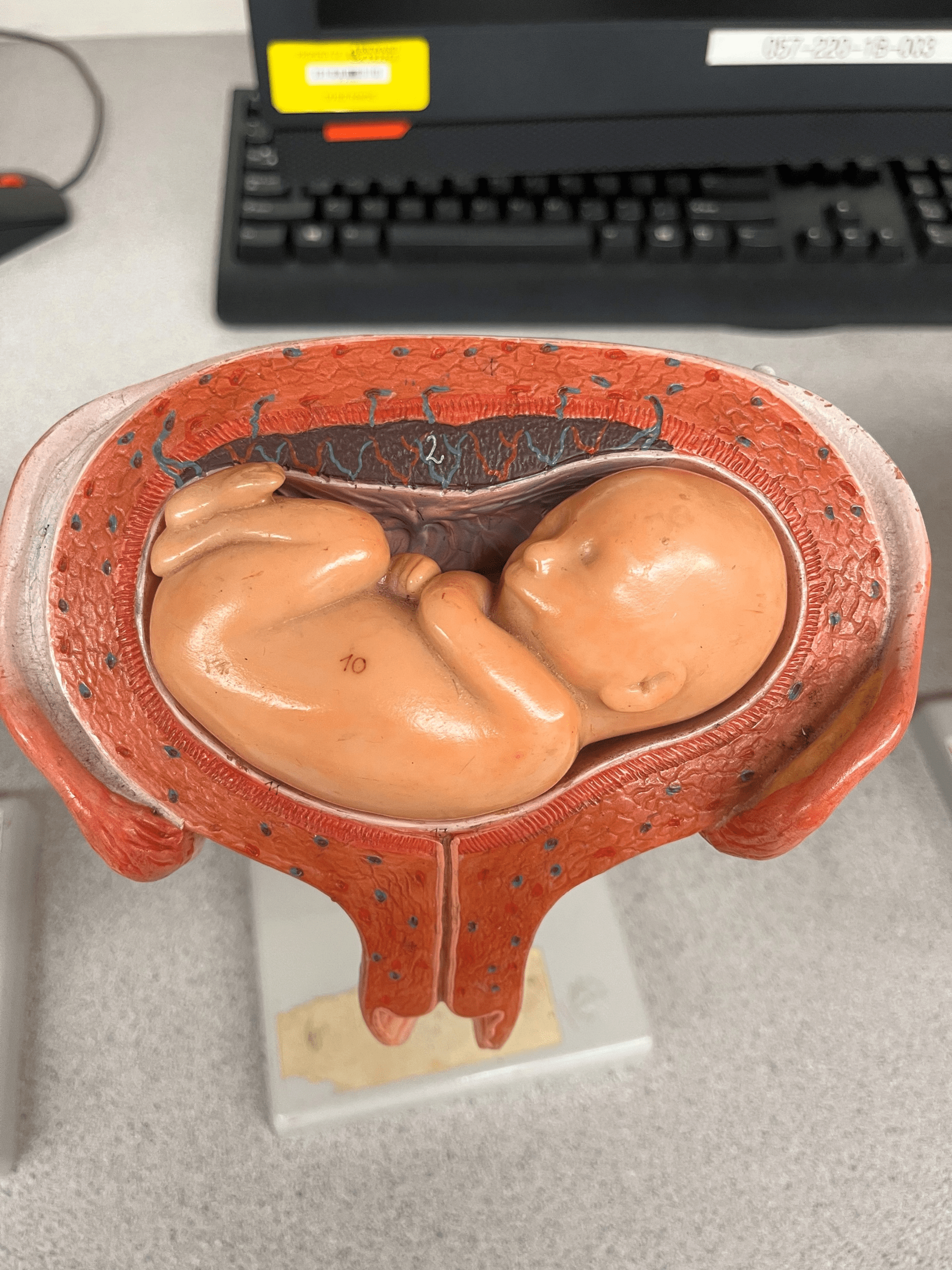
18
New cards
normal position
• Model of the developing fetus in the uterus.
• The position in which the head faces downwards.
• Also known as the vertex position.
• The position in which the head faces downwards.
• Also known as the vertex position.
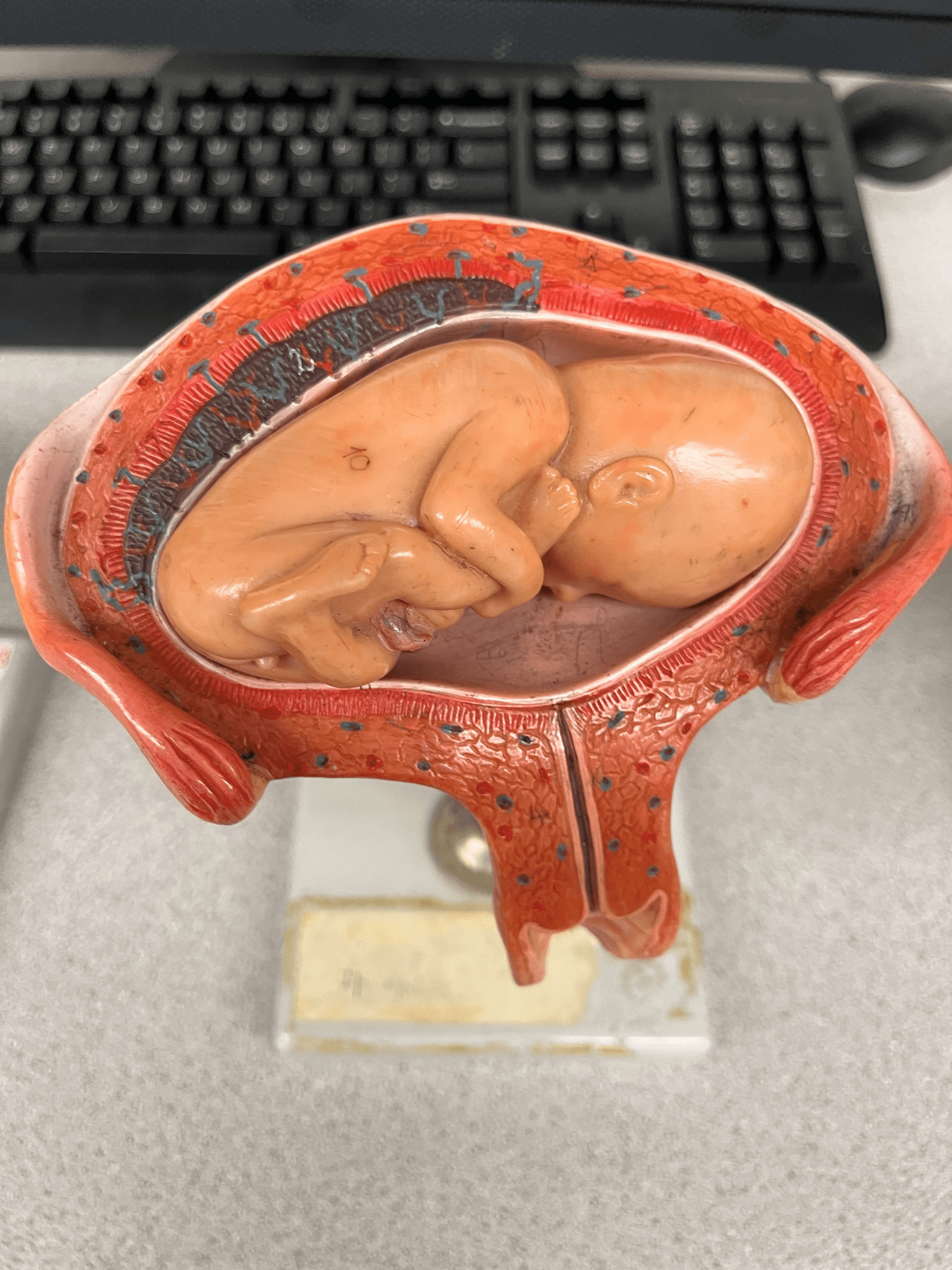
19
New cards
placenta
• Organ that delivers nutrients and oxygen to the fetus and removes wastes from the fetus.
• Connected to the fetus by the umbilical cord.
• Contains chorionic villi from the fetus and intervillous spaces from the mother.
• Connected to the fetus by the umbilical cord.
• Contains chorionic villi from the fetus and intervillous spaces from the mother.
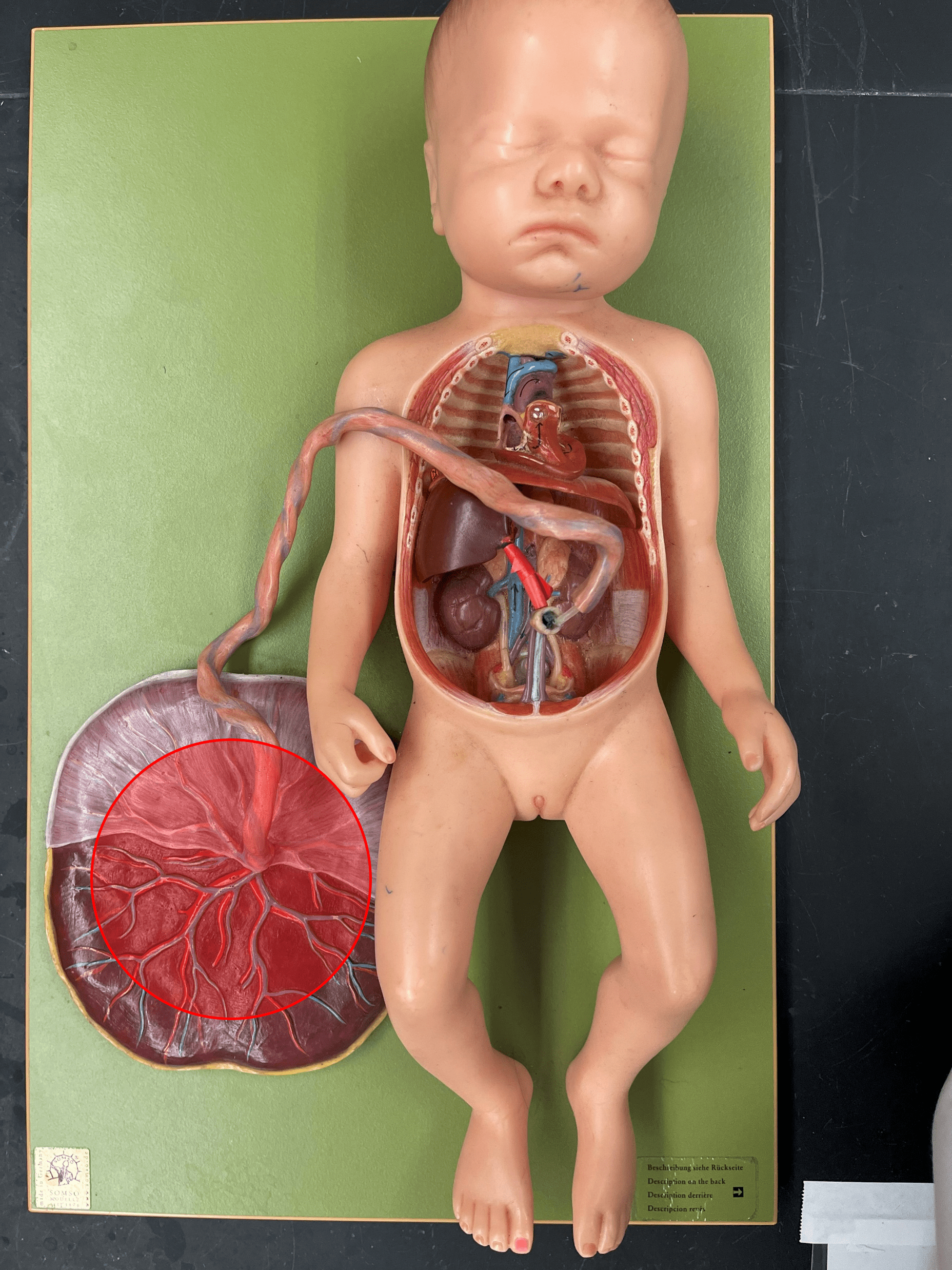
20
New cards
umbilical cord
• Connects the fetus to the placenta.
• Contains an umbilical v. and two umbilical aa. as part of the fetal circulation.
• Contains an umbilical v. and two umbilical aa. as part of the fetal circulation.
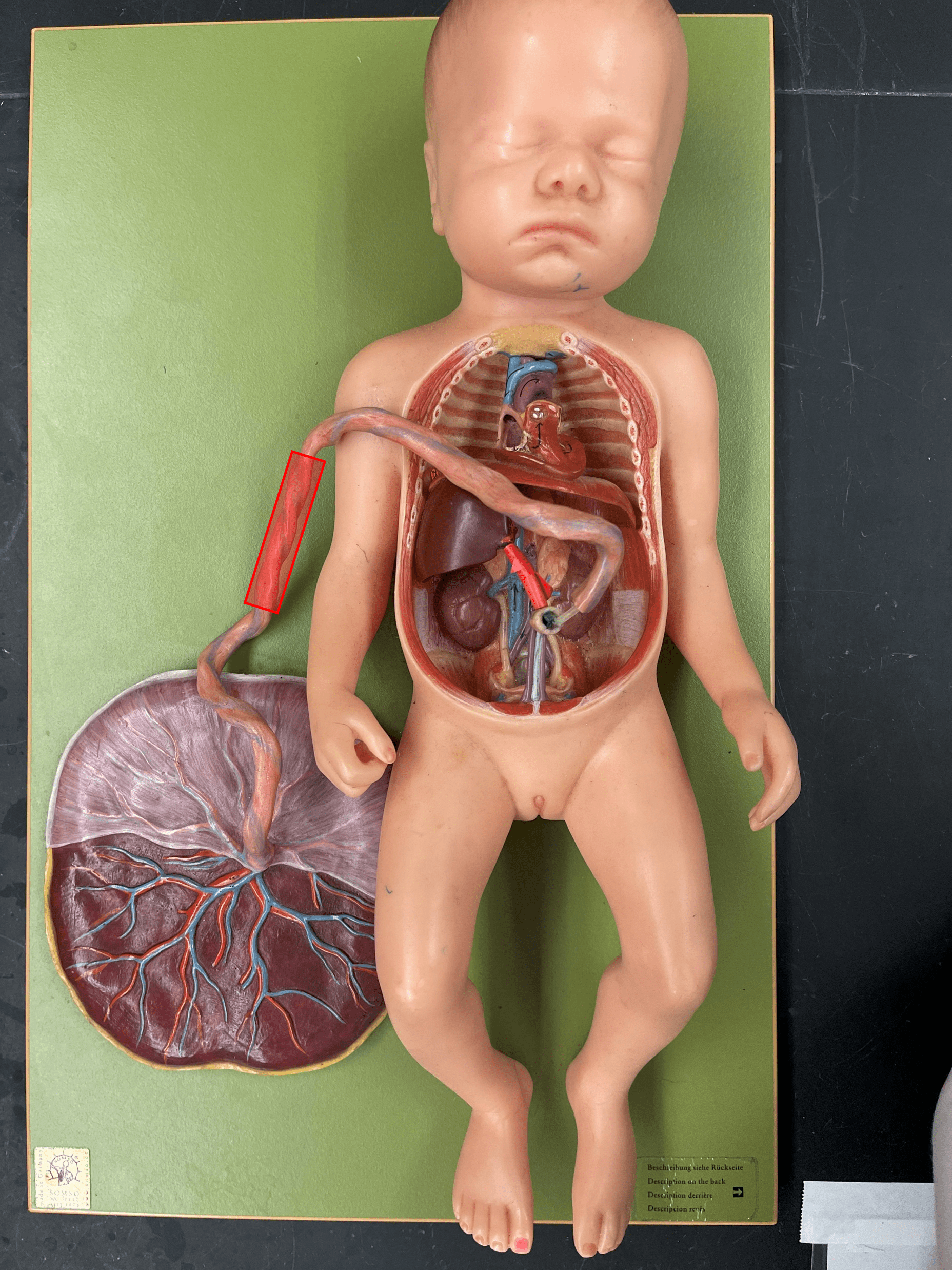
21
New cards
ductus venosus
• Part of the fetal circulation.
• Shortcuts blood to the inferior vena cava, bypassing the liver.
• Becomes the ligamentum venosum.
• Shortcuts blood to the inferior vena cava, bypassing the liver.
• Becomes the ligamentum venosum.
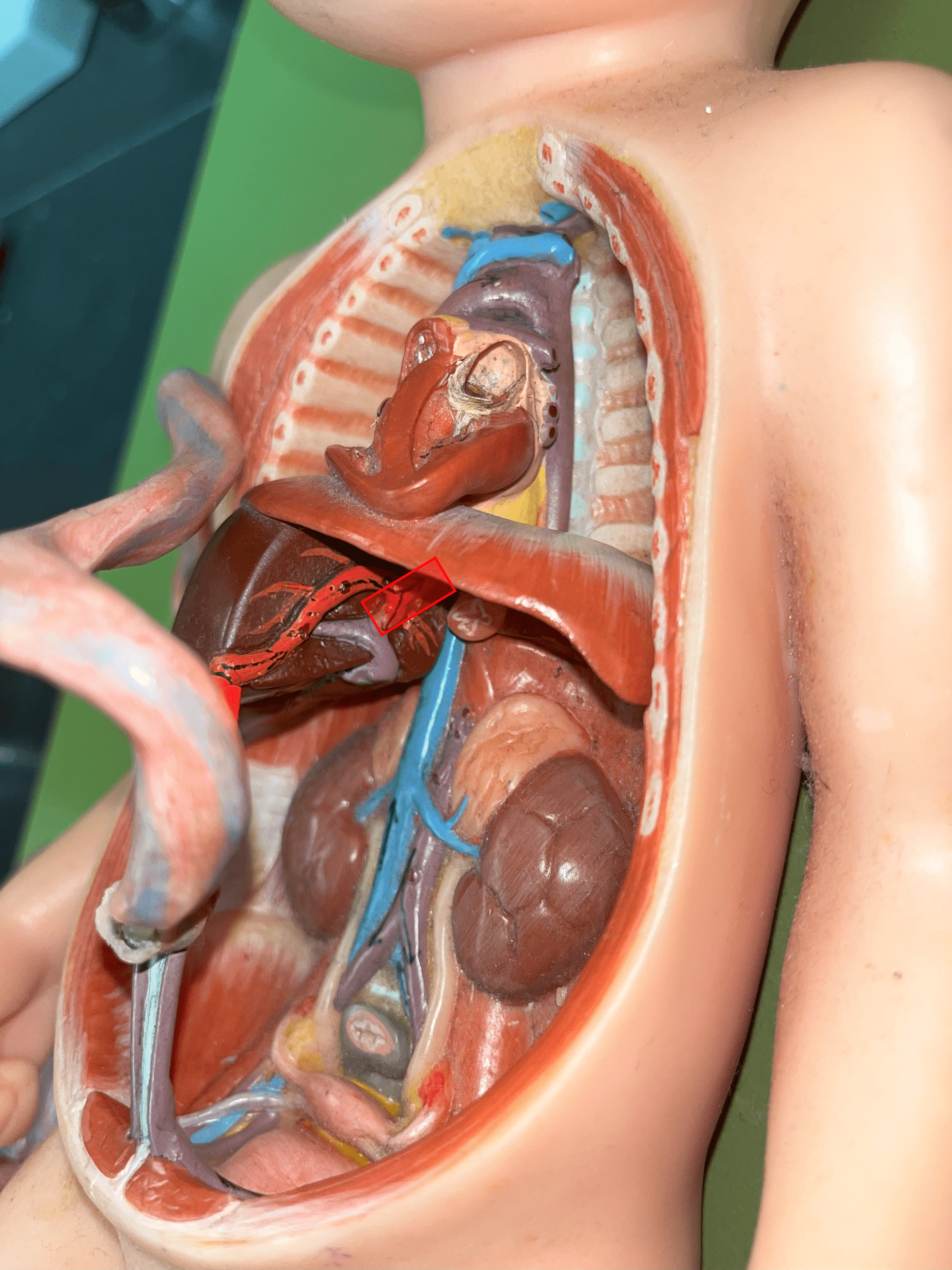
22
New cards
foramen ovale
• Part of the fetal circulation.
• Shortcuts blood to the right atrium from the left atrium, bypassing the pulmonary circuit.
• Becomes the fossa ovalis.
• Shortcuts blood to the right atrium from the left atrium, bypassing the pulmonary circuit.
• Becomes the fossa ovalis.
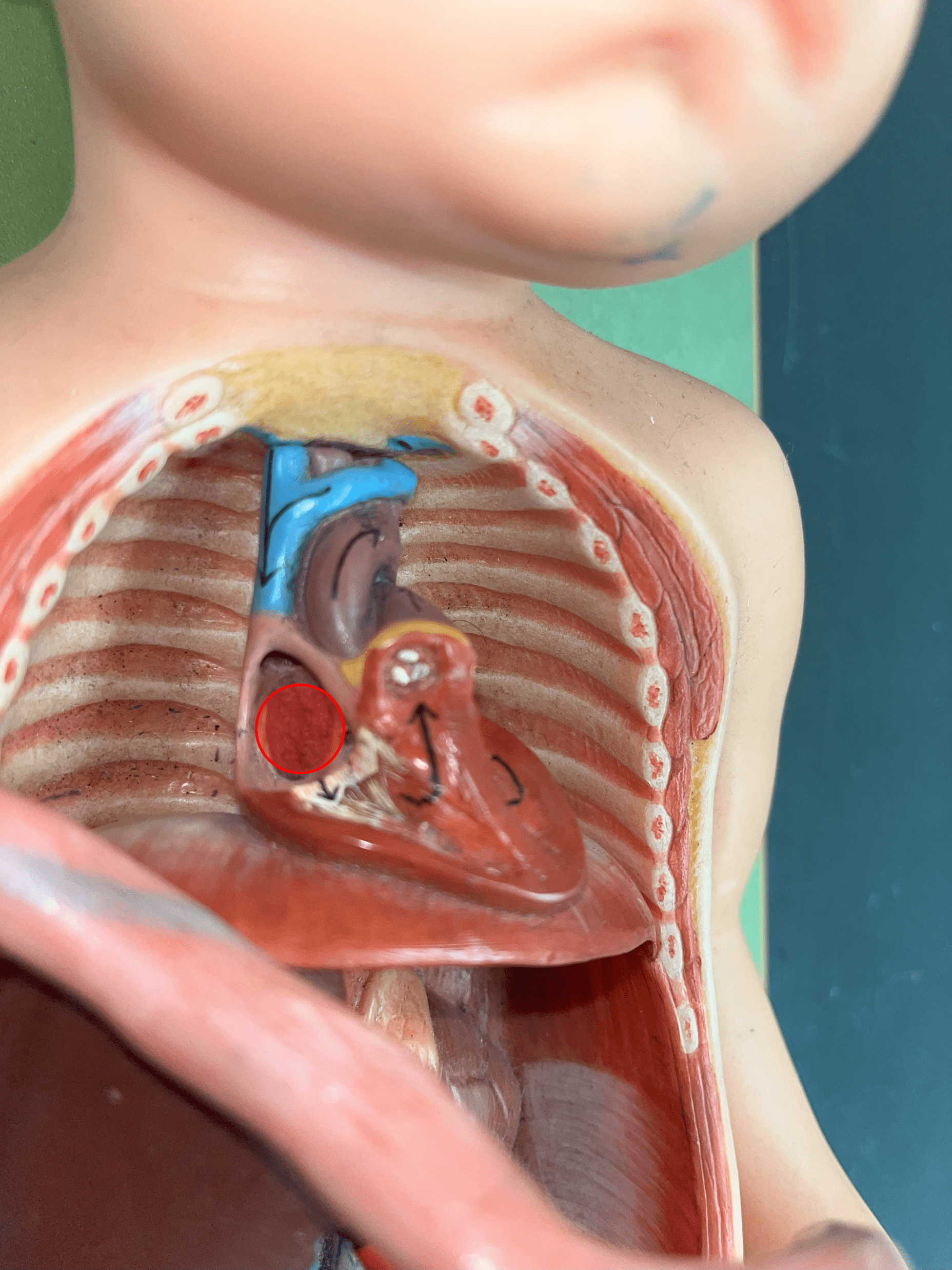
23
New cards
ductus arteriosus
• Part of the fetal circulation.
• Shortcuts blood from the pulmonary trunk to the aorta, bypassing the pulmonary circuit.
• Becomes the ligamentum arteriosum.
• Shortcuts blood from the pulmonary trunk to the aorta, bypassing the pulmonary circuit.
• Becomes the ligamentum arteriosum.
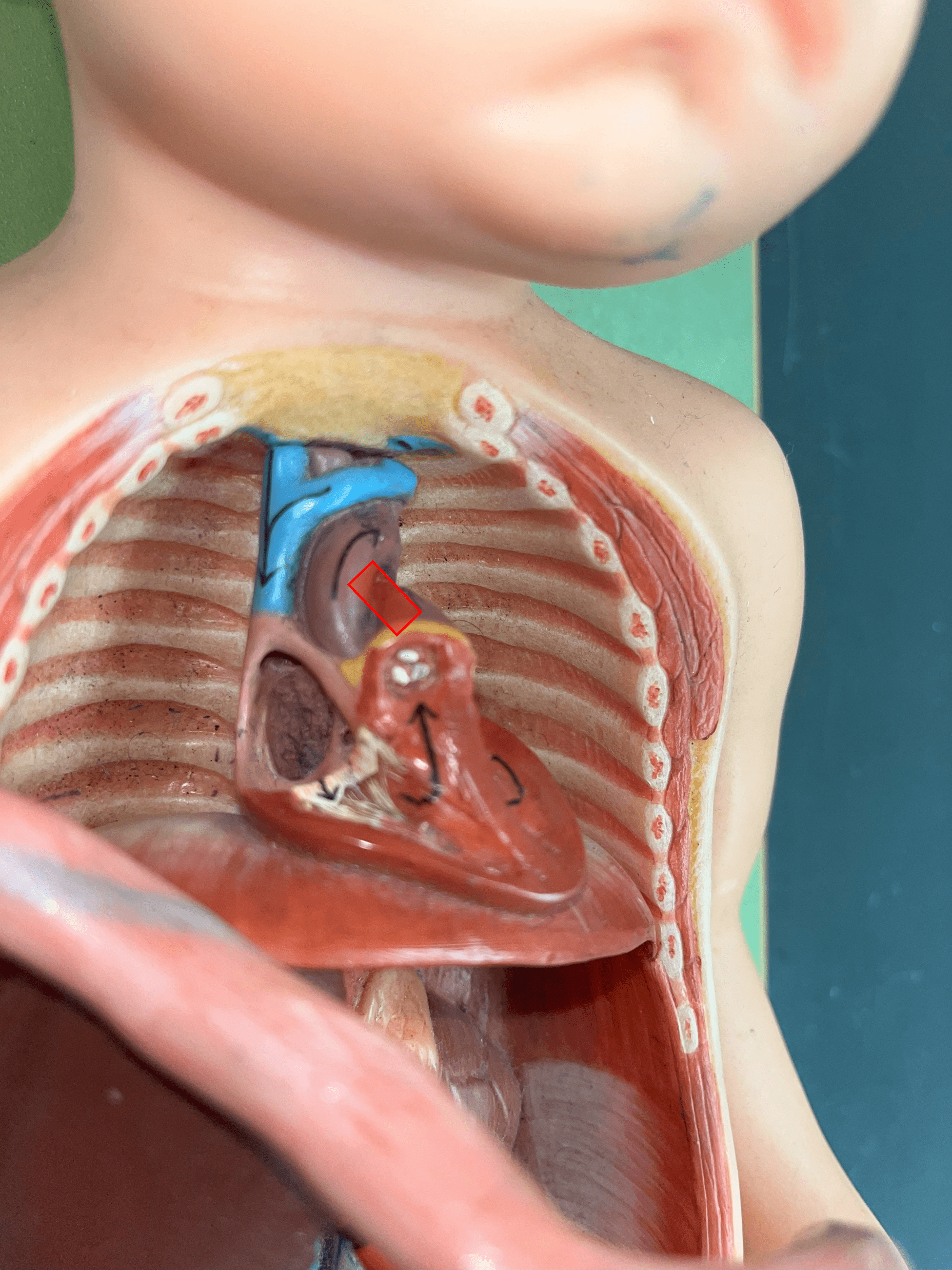
24
New cards
one-cell stage
• Slide histology of starfish development.
• A single cell.
• A single cell.
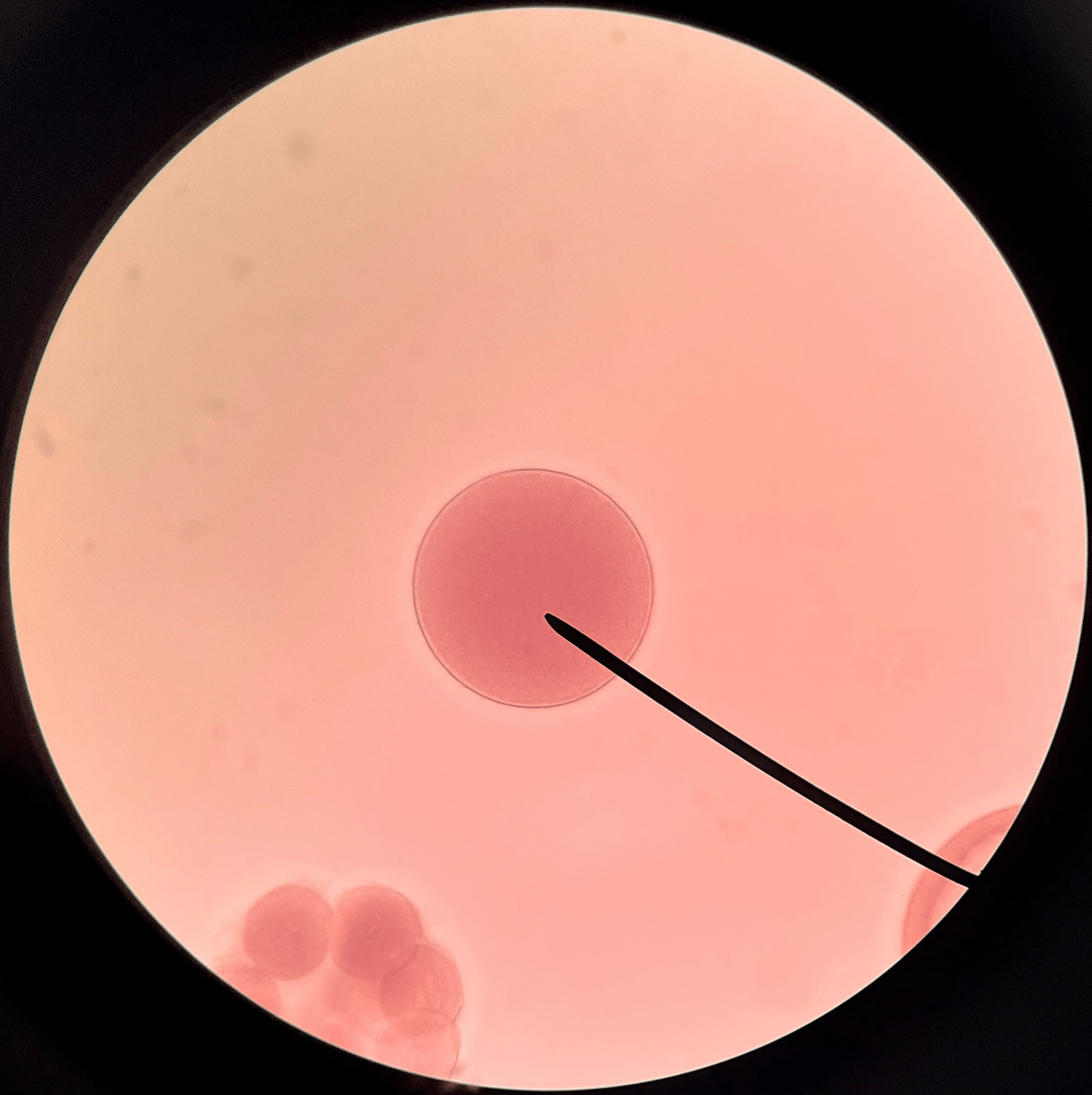
25
New cards
two-cell stage
• Slide histology of starfish development.
• Two cells.
• Two cells.
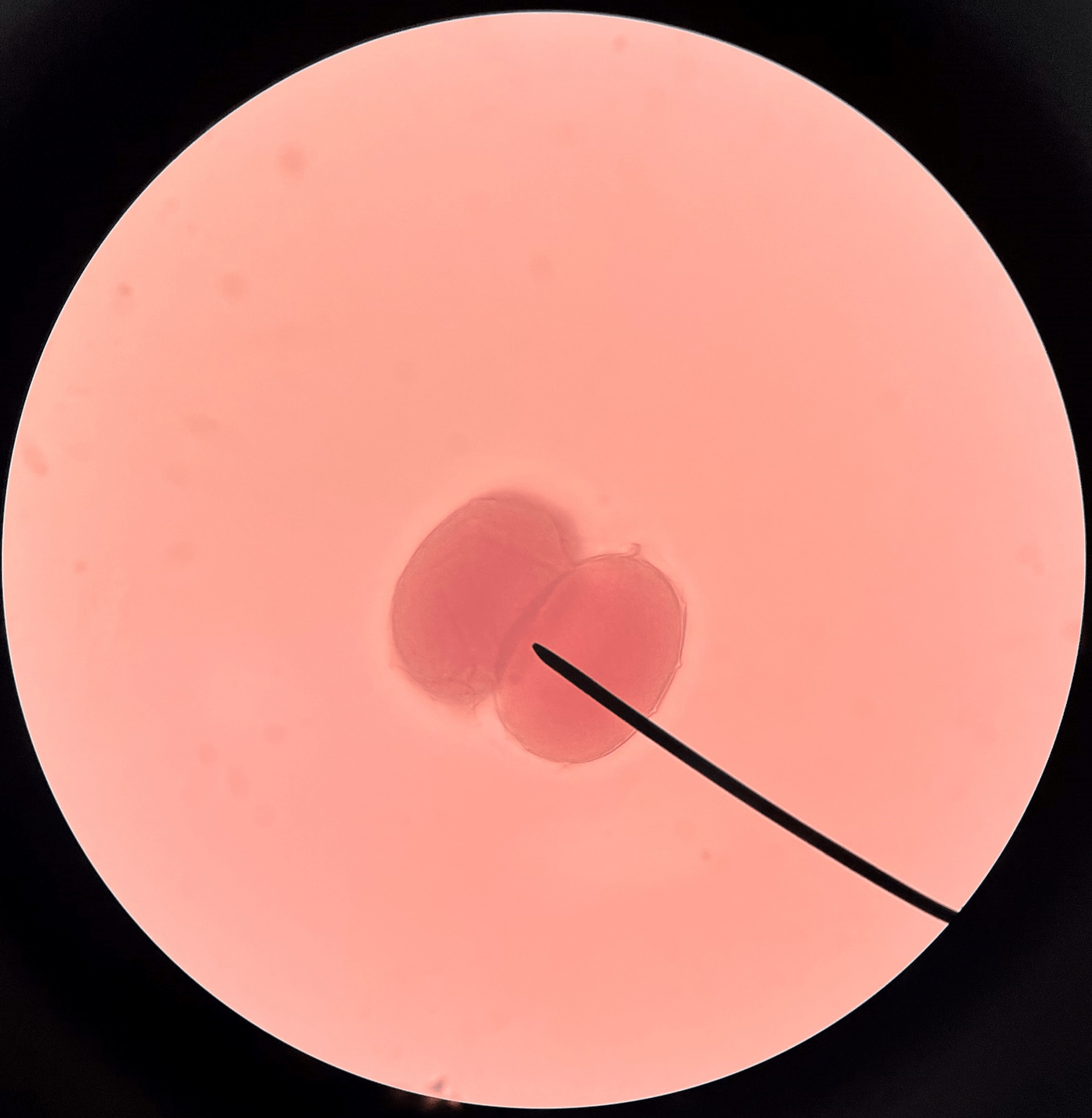
26
New cards
four-cell stage
• Slide histology of starfish development.
• Four cells.
• Four cells.
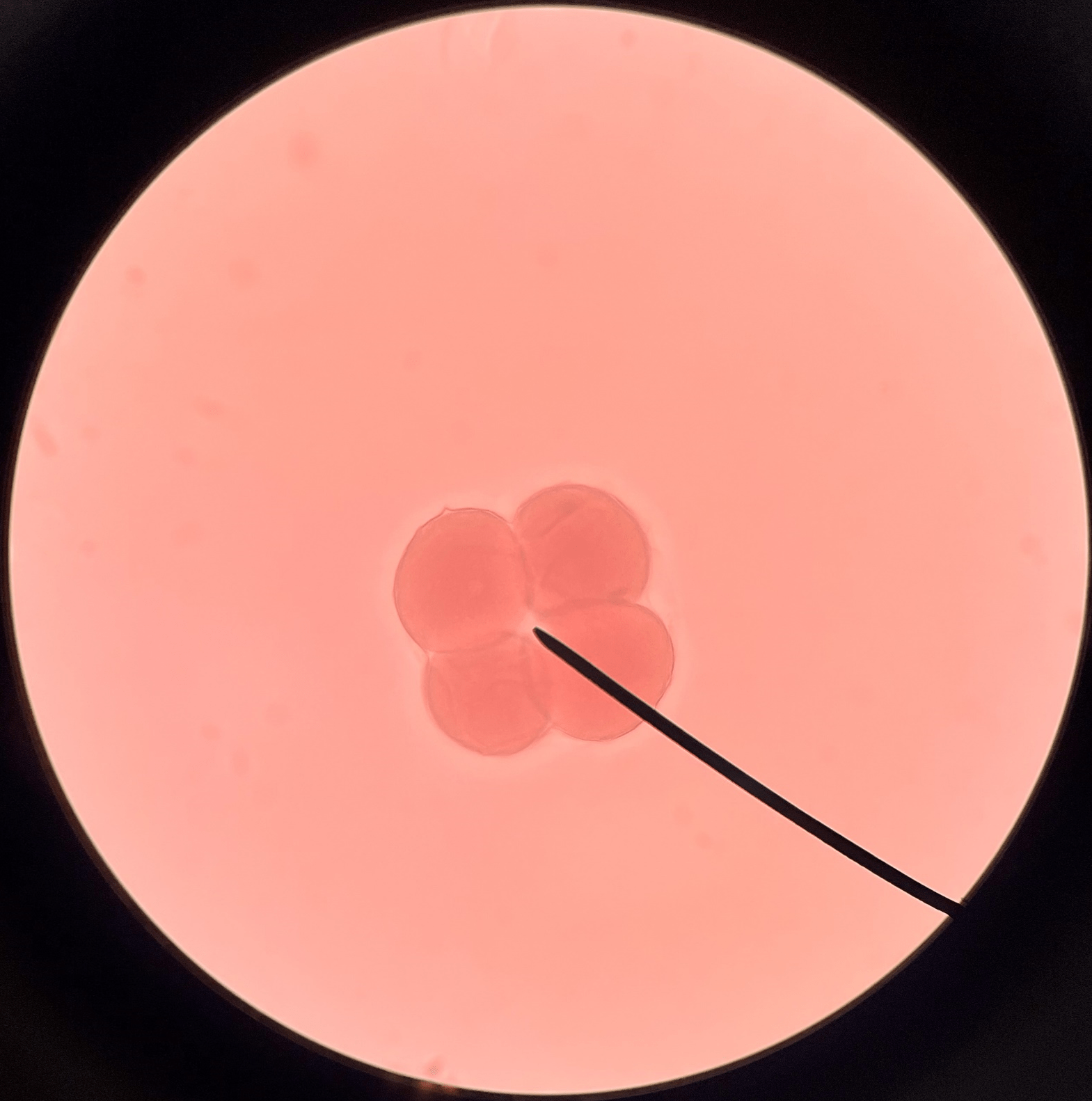
27
New cards
eight-cell stage
• Slide histology of starfish development.
• Eight cells.
• Eight cells.
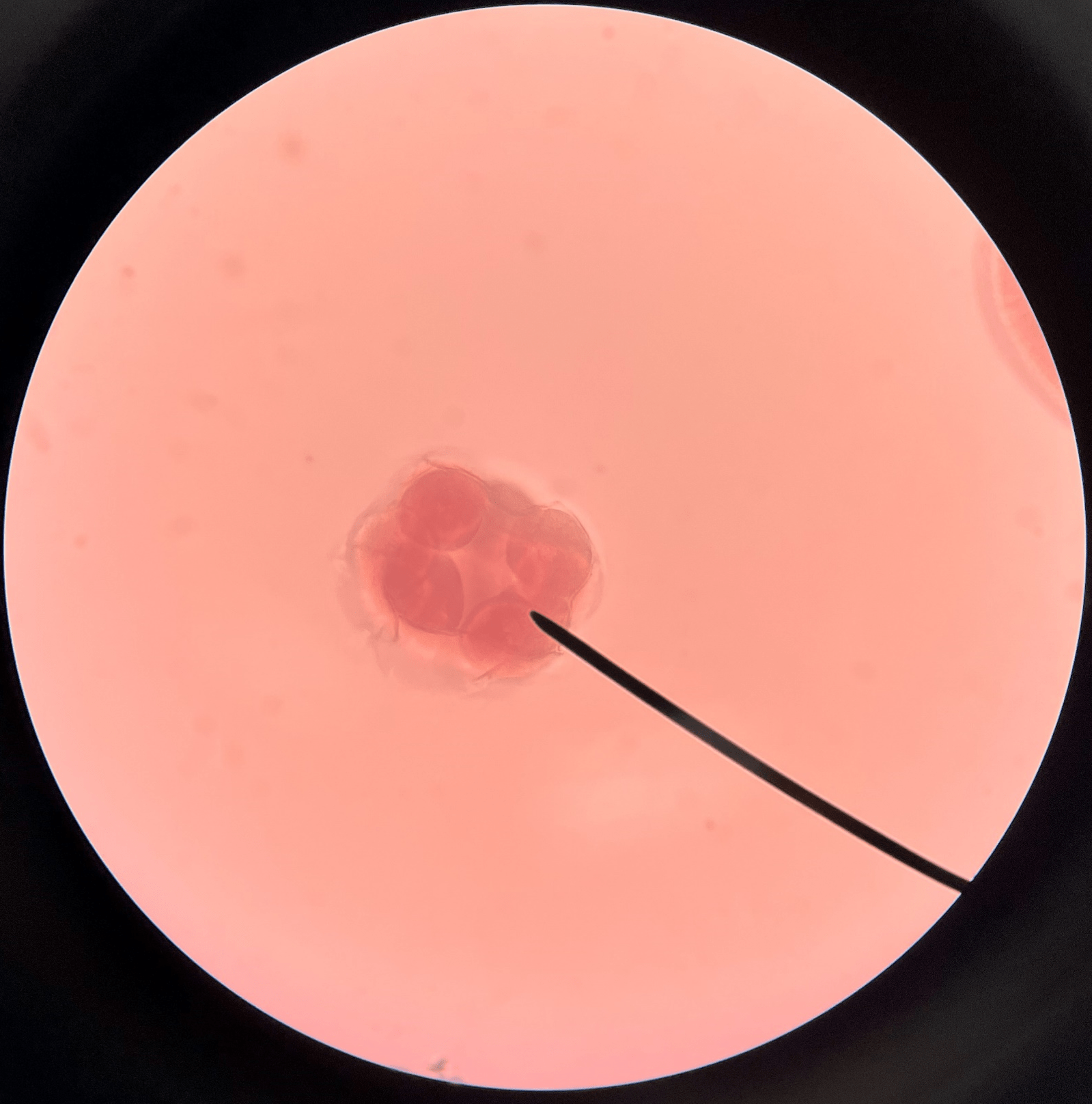
28
New cards
morula
• Slide histology of starfish development.
• A round cluster of at least 16 cells.
• A round cluster of at least 16 cells.
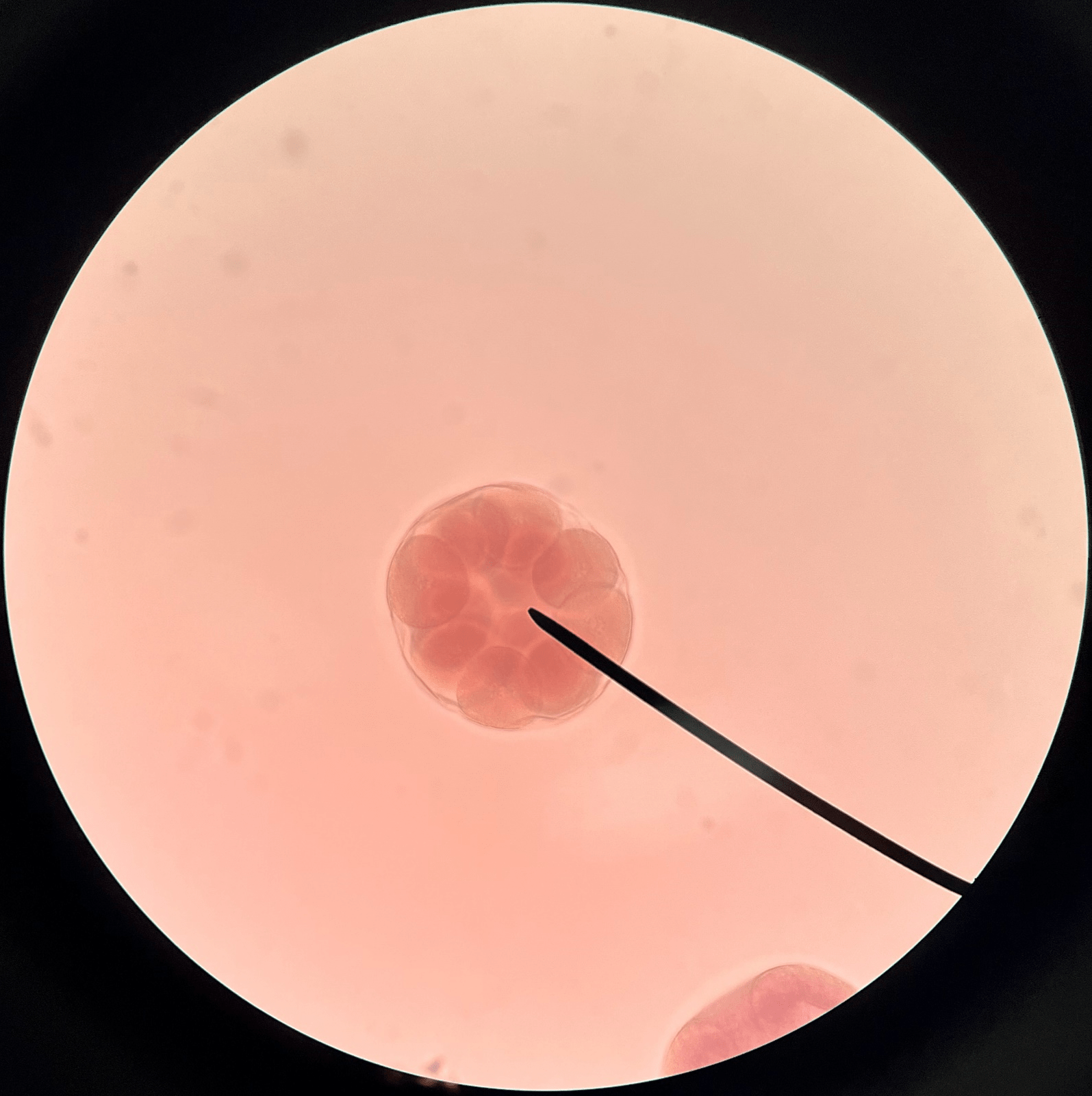
29
New cards
blastula
• Slide histology of starfish development.
• A hollow ball of cells.
• Also known as a blastocyst.
• A hollow ball of cells.
• Also known as a blastocyst.
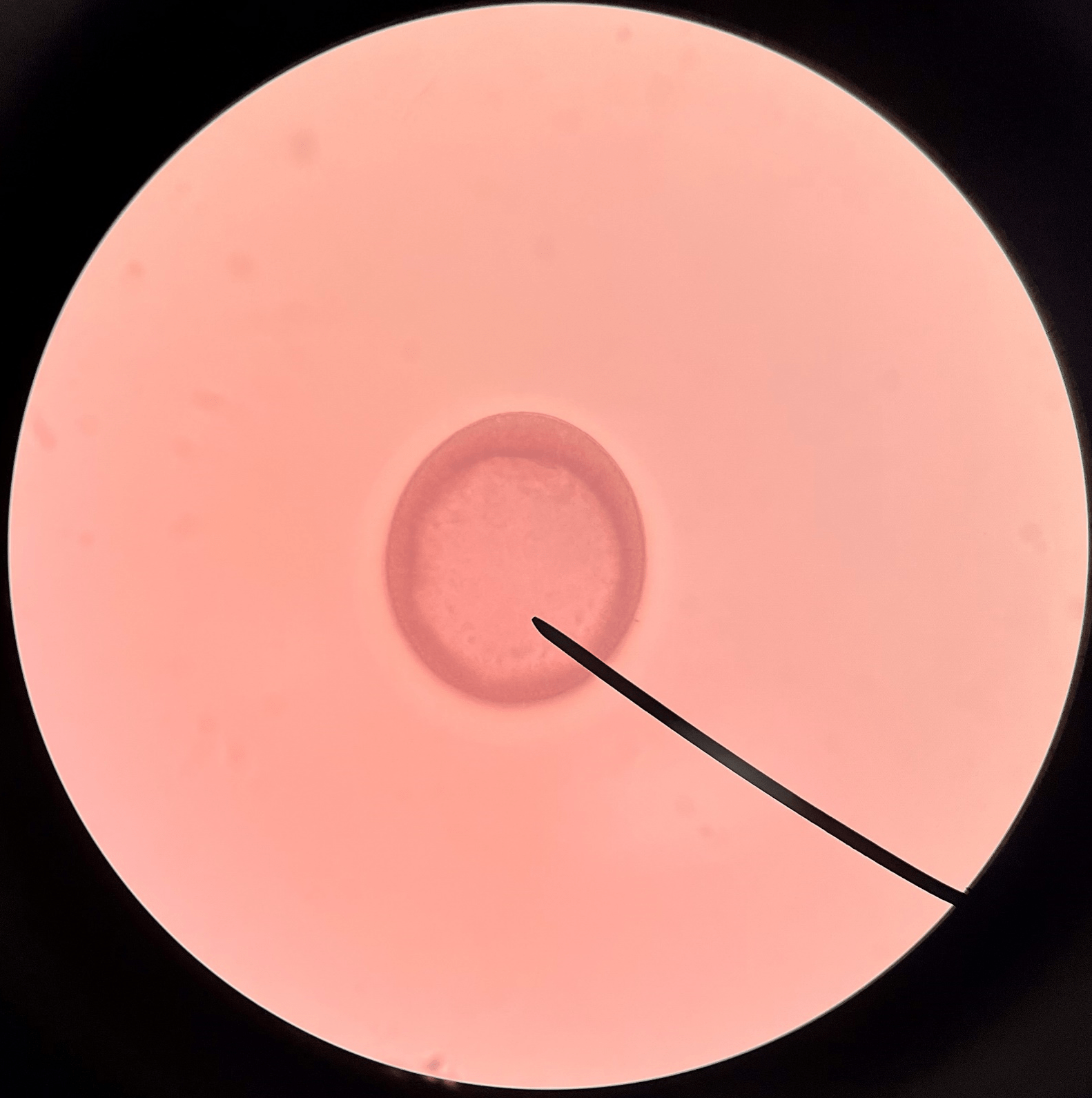
30
New cards
early gastrula
• Slide histology of starfish development.
• The blastocyst is undergoing gastrulation.
• The blastocyst is undergoing gastrulation.
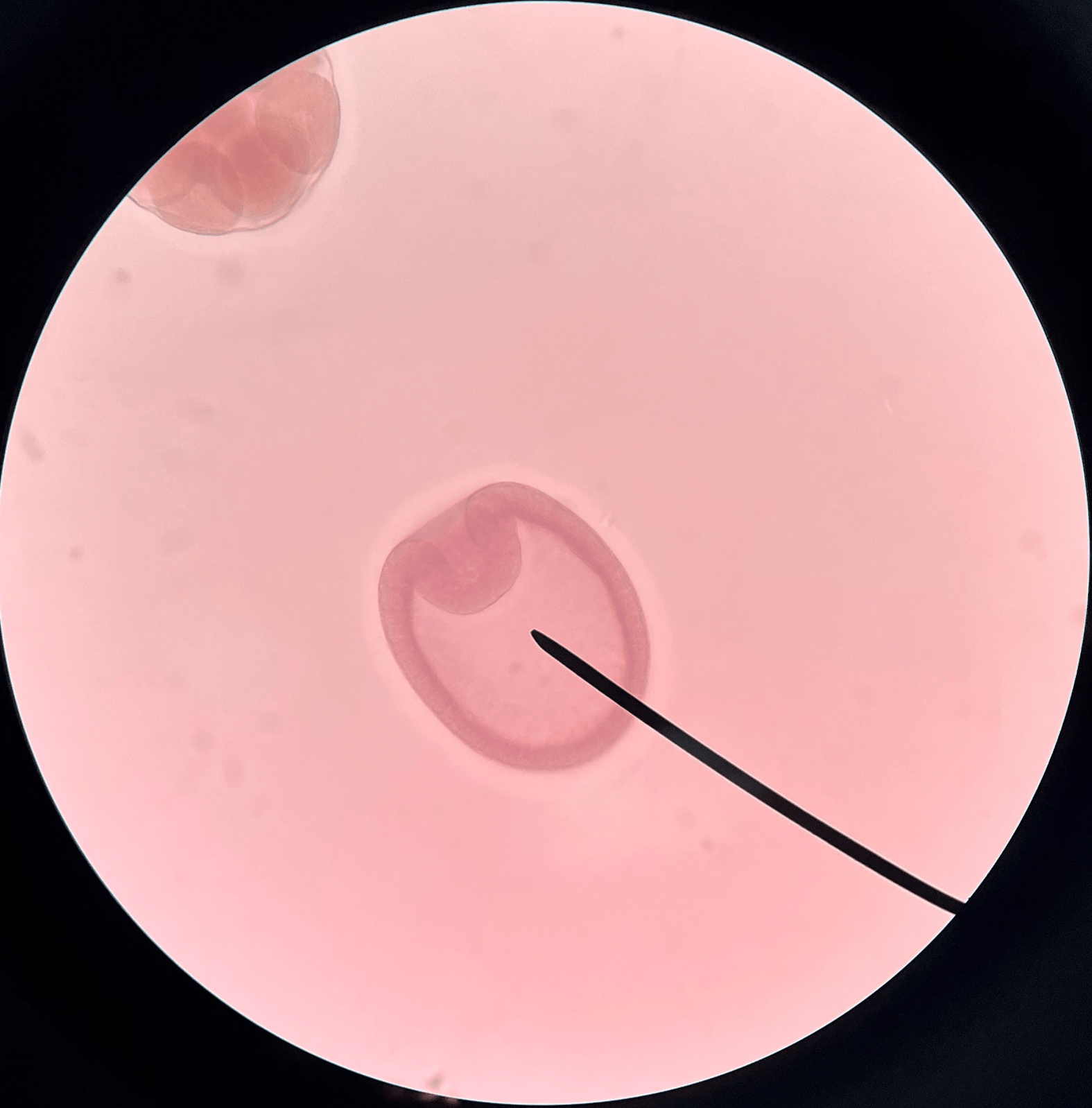
31
New cards
late gastrula
• Slide histology of starfish development.
• The blastocyst has nearly completed gastrulation.
• The blastocyst has nearly completed gastrulation.
